Making life better by design
Design Council’s story of impact
Published July 2020
Registered charity: Charity no. 272099

Design Council’s story of impact
Published July 2020
Registered charity: Charity no. 272099
Foreword
About Design Council
Our achievements in the last year
Communicating the value of design
Supporting businesses to innovate, be more productive and resilient
Pioneering the use of design in public services Supporting
At Design Council we know the enormous value of design, not only in terms of economic prosperity, but also the significant social and environmental benefit it brings. Yet despite the transformative impact of design, we know that many people still do not fully understand what it can do. Over the years, Design Council has made significant strides forward in demystifying design, publishing pioneering research on its value, influencing policy, and inspiring and enabling people to embed it into their work.
Of course, it takes time to see the difference that design can have, especially in relation to new public services or the development of new places. And so rather than focus on our progress in the last year alone, this report reflects on our key achievements over the last 15 years. In doing so, we are able to tell the story of how we have communicated design to a global audience through the Double Diamond – a truly outstanding achievement – along with the major impact we have had on three important areas of the economy: business innovation, public services and places.
What is particularly striking about this report is the sheer diversity of projects where design has made a significant difference – from coastal town regeneration in Amble (page 58), to using design to reduce aggression in A&E (page 54), to commercialising pioneering nano-technology (page 40). The good work does not simply stop when participants complete a Design Council programme. Our work has a lasting impact as it enables participants to develop essential design skills and mindsets, allowing them to pass on their knowledge and work with others to better deal with future challenges. For example, a remarkable 93% of participants on our public sector innovation programmes went on to share with colleagues the approaches they learnt from us (see our highlights on page 52).
A central principle of design is to test, learn and iterate. This is exactly what we do at Design Council. We are always challenging ourselves to innovate, adapt and grow so we can build on our successes and address major challenges of our time. Our recently launched Strategy 2020-24 sets out our commitment to mobilise the use of design to improve health and wellbeing, enable sustainable living, and increase design skills so we are best equipped to do this.
We publish this report in the midst of the coronavirus pandemic. It is a time that calls for critical thinking and creativity, rapid responses and resilience. It is a time for design, and we will push for it to be prioritised and invested in.
Building on the success of the last 15 years, we will continue to focus on the impact of all we do – not only on the public purse but also on people and the planet. We will continue to work with colleagues and partners across the country and internationally to confront shared challenges, discover new possibilities and develop creative and innovative solutions – to make life better by design.
Sarah Weir OBE Chief Executive, Design Council

We were set up in 1944 by Churchill’s war cabinet to support Britain’s economic recovery after World War II. Our founding purpose was to promote ‘by all practical means the improvement of design in the products of British industry’.
Some 75 years later, our work has evolved. We have a unique offer, bringing our skills and knowledge together to benefit three major areas of the economy: business innovation, places and public services. We draw on our unrivalled network of more than 450 experts from all kinds of design disciplines to make life better by design.

We publish pioneering, evidence-based research on the value of design, commissioning and gathering this together to show the need and make the case for its use.
We provide independent advice for clients, stakeholders and partners, based on evidence, insights and expertise. This enables them to develop relevant policies and find design-led solutions to their current and future challenges.
We develop and run major design-led programmes in the UK and abroad that evidence the value of design, helping clients discover for themselves what works.
We evaluate all we do, providing evidence and stories to influence local and national governments in the UK and abroad. We inspire others to endorse and promote design as a force for change.
We influence policy and communicate our work widely, passing on our knowledge, skills, expertise and insights, and pressing for change where needed.
Our vision is a world where design, as a force for change, makes lives better for all.
Our mission is to make life better by design by creating better places, better products and better processes, all of which lead to better performance.
Partnered with
local authorities
Our local authority partnerships have enabled us to work with more than 1,000 participants to learn and apply design skills to their challenges.
Worked with
major infrastructure providers
Our clients include Network Rail and Highways England.
1=10 people
Worked with
This is just one way we have been working to drive up quality of the built environment.
Supported
entrepreneurs
We provided support and funding to finalists working on separate ventures on our Spark accelerator programme.
Guided
Our pioneering Transform Ageing programme enabled social enterprises find innovative ways to help people in later life.
Engaged
people in our inclusive environments programme
93% of participants then shared with colleagues the approaches they learned through the programmes.
The majority of participants said they felt more confident to act for social change, and most felt better equipped to identify, access and create relevant networks (71%, 71% and 50% respectively).
Delivered
government-backed strategic projects
We have supported national government departments to develop and deliver the National Design Guide, Home of 2030 and High Street Task Force.
public sector innovation participants felt supported
These participants felt that our support helped clarify their challenge, making it easier for them to move forward.
Contributed to the Building Better Building Beautiful Commission’s report
The Commission’s final report, Living With Beauty: Promoting Health, Wellbeing and Sustainable Growth reflects much of the evidence we presented. It also positively references Design Council’s contribution on several occasions.
Design Council, its programmes and people were mentioned in the print media 1,243 times, reaching 129 million readers.
Design Council’s flagship publication, Design Economy 2018, was cited in over 40 media publications last year, reaching 2.8 million readers.
Design Council staff have spoken at over 60 events on the value of design to an approximate audience of 12,750 people, as well as many more online.
The third series of BBC Radio 4’s The Fix, presented by our Chief Design Officer, was downloaded 60,000 times on BBC Sounds in its first two months, as well as having been scheduled for Radio 4’s 7 million listeners.
We have consulted over 2,500 people in consultations on the design of new infrastructure and housing.
What’s the challenge we’ve identified?
Misconceptions and confusion around design are often the biggest barriers of getting people to use it
What did we do and what have we achieved?
We developed one of the most recognised explanations of design: the Double Diamond
We evidenced the financial value of design and design skills to the UK economy
We brought design to new audiences including those less familiar with design
What have we learnt?
There is a difference between the simplicity needed to explain design and the complexity needed to implement it
Design practice constantly evolves and we need to take advantage of the new opportunities it brings
A combination of statistics and stories can encourage people to use design more widely, according to our experience
We saw our Double Diamond – which is widely acknowledged as the simplest way to explain design to a non-design audience – translated into multiple languages and used across the globe.
There are over 10,000 online visits every month to our Double Diamond and the Framework for Innovation that it sits within.
We published Design Economy and Designing a Future Economy, demonstrating the value of design and design skills to the UK economy.
The evidence and statistics in these reports have been used and quoted extensively by government, both in the UK and overseas, influenced the inclusion of design in government policies and been the impetus for numerous further pieces of research and initiatives.
We supported the development of a forthcoming Design Action Plan for the UK (2020) to increase strategic use of design in the public and private sectors for societal and economic benefit.

Design isn’t always easy to explain. Inevitably, misconceptions and confusion around design are often the biggest barriers to getting people to use it.
- Design is commonly assumed to be about just aesthetics or refining an end-product.
- But design is not simply an outcome; it is an entire mindset and skillset. This means that much of the design process and its value can seem ‘hidden’ and unquantifiable.

- A lack of shared language around design or common data to pool the impact of design contributes to the challenge of communicating what design can do (better) and why people should use it.
The complex nature of design and associated difficulties around communicating it creates a barrier to it being used as widely as it should be. Insights from the Arts and Humanities Research Council (AHRC) funded research carried out by Manchester Metropolitan University and PDR Cardiff Metropolitan University in 2019 has shown that design is still poorly understood or recognised by senior leaders, which limits organisations’ capacity to use design strategically within their work. Evidence from the same research indicates that explaining what design is through the effective use of stories and evidence could play a significant role in enabling design to be more widely used through the development of a UK Design Action Plan.
The ability to visualise and conceptualise the intangible.
The passion and curiosity to design solutions that are right for people and planet.
The technical abilities to enable the end goal to be reached.
In 2004 we developed the Double Diamond to help non-designers understand the design process. It originated from examining what approaches designers were already using and finding a simple way to communicate this process visually. It was based on looking at how organisations are using design to create innovative products and services, as well as Design Council teams experimenting with design methods in areas such as education and technology research.

Since its launch, it has become among the most recognised and applied design processes in the world, translated into multiple languages and taught within higher education design courses across the globe.
A recent call for evidence on the use of the Double Diamond showed how widely it is used across different sectors – from health systems to retailers, museums to regulators.
There are 58 million Google search results on ‘Double Diamond
“A drive to demystify design process and make it accessible to a non-design audience of policy makers, manufacturing CEOs, technologists and educators. What was nice, though, is that the design world embraced the model as well.”
- Anna White, one of the original team (with Chris Vanstone) that worked on the Double Diamond. Over the years, it has also been adapted hundreds of times, commonly to highlight complexity, overlapping outcomes and emergent thinking as the process unfolds. Designers around the globe have shared their own modified and expanded Double Diamond such as IBM’s infinity loop, and the triple diamond. As it is free to use and open-source, other groups, like Extinction Rebellion, are adopting it as a democratic tool to cooperatively re-design our future.
The Design Council website receives 10,000 hits every month on the Double Diamond and the Framework for Innovation that it sits within.

Design Council has been growing the evidence base on the value of design and mapping its use across sectors of the economy for decades.
Our Design Economy (2015 and 2018) reports that we produced on behalf of government were worldfirsts, detailing the state of design and its value to the UK economy. For the first time ever, we were able to show how design contributes across all economic sectors, not just within design industries. In fact, 68% of design’s £85.2bn GVA in 2016 was created by people working in industries such as aerospace, automotive and banking. Our research report, Designing a Future Economy (2017), focused specifically on design skills. This research uncovered that 2.5 million people use design skills in their work, contributing £209bn to the UK economy.
Our research is cited globally and is regularly used as a blueprint for cities and countries around the world looking to evidence the value of design. For example, in 2019 we were asked to participate in the international Design Declaration Pre-Summit Metrics Project, sharing learning from our Design Economy methodology on how global metrics on the value of design could be developed. We can also see direct action as a result of the research:
- Design Can are taking action on the lack of diversity we found in design to develop initiatives aimed at better inclusivity and representation.
- Our research is regularly cited by design researchers and other disciplines as a key reference and starting point for further research.
We are committed to communicating this to the widest audience possible, in particular to those that are less familiar with design.
Our research and experience show that people need evidence to value design, but also powerful stories to understand how it works. Storytelling is a key piece of our work. Over the last year alone:
- We produced short films documenting the difference design can make. These included stories of the transformation of the seaside town Amble (see page 58), and the reduction of violence and aggression in A&E (see page 54).
- Our Chief Design Officer presented the third series of BBC Radio 4’s The Fix, which explores how design can solve difficult social problems. This was downloaded 60,000 times on BBC Sounds in its first two months, as well as being scheduled for the Radio 4’s 7 million listeners.
- We have also looked to showcase the work of individual designers, particularly from groups that are less represented in the design community. Our Leading Women series, developed for the centenary of the Representation of the People Act, profiled 12 female designers.
We also recognise the role that design can play in policy making. We aim to influence policy decisions, ensuring that design-use is built into decision making and practice.
- Following our recommendations, the revised National Planning Policy Framework (NPPF) features significant changes, with design now placed at its heart.
- We submitted evidence to the Building Better, Building Beautiful Commission, much of which is reflected in its final report.
- We are continuing to ensure that design in the public and private sectors in the UK is fully utilised for maximum societal and economic benefit, and have been supporting AHRC funded work by Manchester Metropolitan University and PDR Cardiff Metropolitan University to develop a Design Action Plan for the UK (set to be launched in 2020).
We brought design to new audiences including those less familiar with design

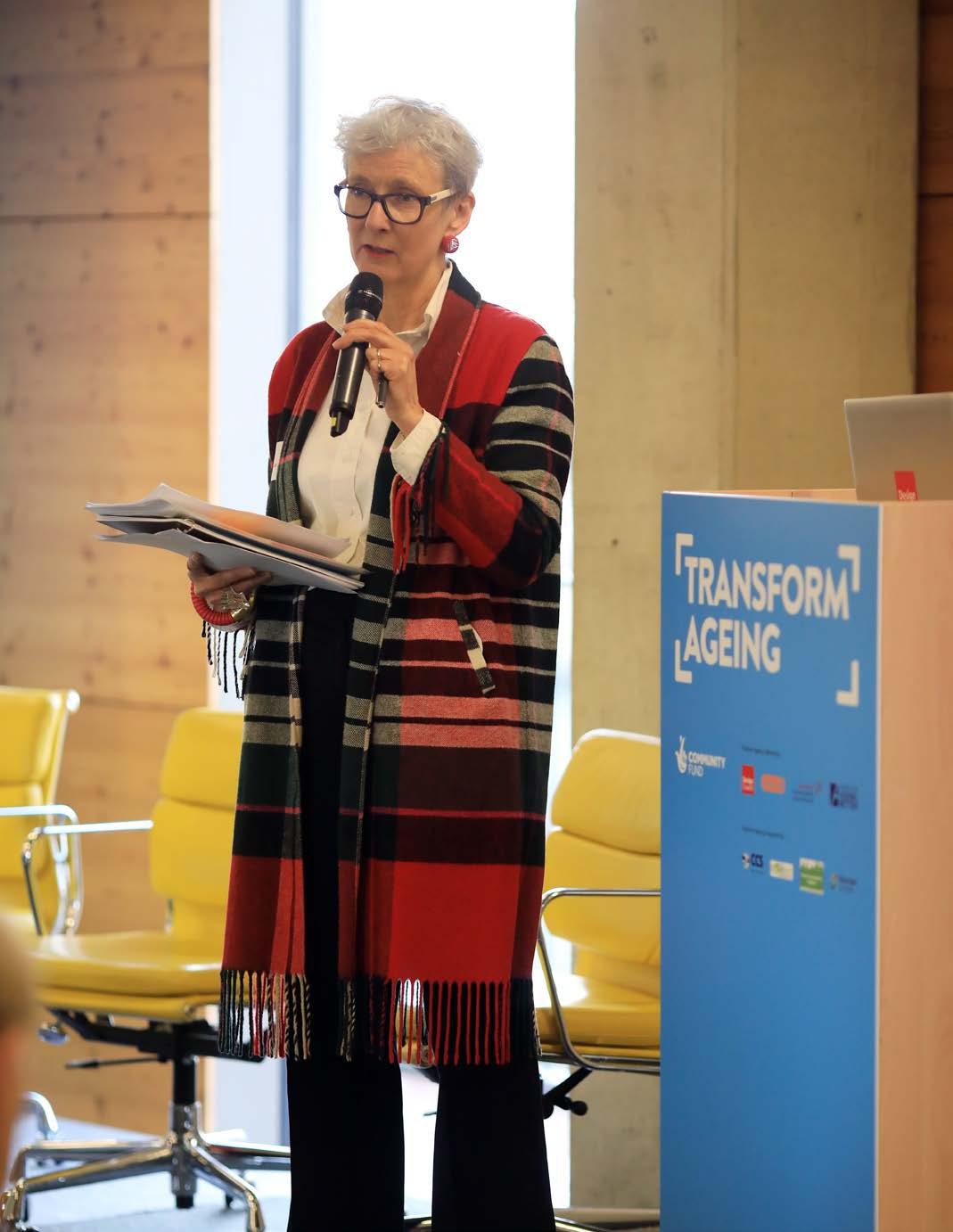


There is a difference between the simplicity needed to explain design and the complexity needed to implement it.
“I think you can use the Double Diamond to tell all sorts of design stories in really helpful ways – part of its beauty is its simplicity.” Jonathan Ball (Design Associate). But there is a difference between the simplicity needed to explain design, and the complexity of implementing a design process that creates significant value. Over the years, we have learnt better ways of explaining the process. These increasingly inclusive, collaborative, thoughtful and effective approaches and tools have been translated into a new iteration of the Double Diamond, our Framework for Innovation (2019, see annex on page 86) and also the development of our new design principles as set out in our 2020-24 strategy
Definitions of design and focus have shifted over the last 75 years from product only, to recognising the value it has to offer services and places, and now policies and wider systemic challenges. This presents a good opportunity for Design Council to ensure that we are evidencing and promoting the latest that design can offer the UK. Rather than a focus on individual user needs, we need to make sure we’re thinking about wider societal and environmental needs. Rather than a focus on an individual innovation, we need to be more resourceful and collaborative. And when we create and implement products and services, we should re-design what happens post-consumption, thinking through how materials and resources can be reused and recycled. In 2020, we are conducting research into future methods of leading design practitioners, which we will bring together and share.
Design practice constantly evolves and we need to take advantage of the new opportunities it brings.
A combination of statistics and stories can encourage people to use design more widely, according to our experience.
Our research and experience show that people need evidence to value design, as well as powerful stories to understand how it works. Partly, this is because people can have their own preferences about how they receive information and what they find convincing. It is about what type of evidence is needed when making decisions. When we consulted on our next Design Economy (planned for 2021), respondents indicated that while quantitative evidence of value for money often sparks initial interest among decision-makers, it is through sharing examples about how design has worked that enables people to understand better how to make the most of design.
What’s the challenge we’ve identified?
Many businesses are still holding back from making the best use of design or design skills
What did we do and what have we achieved?
Supported businesses to be resilient during a recession
Helped businesses grow in UK and international markets
Addressed a market failure by supporting innovative, inclusive products to market
What have we learnt?
Design is still seen as a cost, not an investment
It is important to engage businesses at the right time
Design can help build resilience to challenges and create opportunities for the future
Our key achievements over the last 15 years
Supporting businesses to innovate, be more productive and resilient.
generated for every £1 invested
Our Designing Demand programmes delivered an estimated GVA of over £29.7m, equivalent to £7.22 returned to the nation for every £1 invested by the Government.
We have worked with 5,000 businesses to enter new markets, become more resilient and improve their products. Those we supported directly over the global economic depression of the last decade were almost twice as likely to survive another five years.
We helped 150 finalists from our accelerator programme, Spark (2014 – 2019), to fast-track their inclusive and innovative products to market. Between them they received more than £1.8million in funding.
We saw our Transform Ageing programme (2017-2020) generate £3.73m income and brought in £575k of additional investment, reaching 89,500 people and creating 193 jobs.
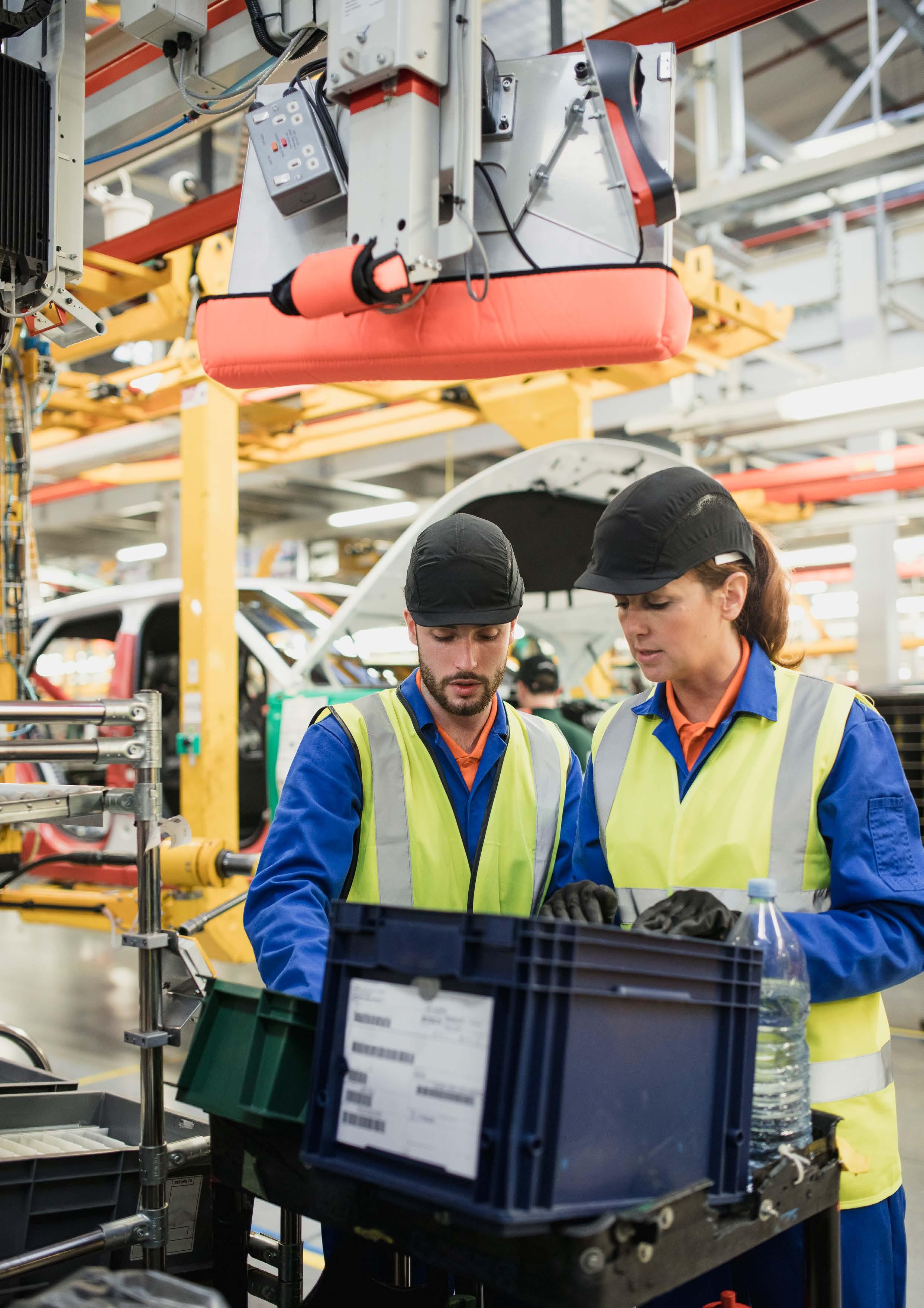
For businesses to be resilient and thrive, they need to clearly understand their customers’ needs, be able to differentiate their offer in the marketplace, and develop an evidence-based strategy for sustainability, resilience and growth. Design improves business performance, de-risking and encouraging innovation, competition and economic growth. There is compelling evidence for this.
- The 2014 Design Value Index showed that corporations using design strategically perform significantly better than those that do not.
- In 2018 McKinsey’s The Business Value of Design found that strongly design-led businesses outperformed industry benchmarks by two to three times and increased their revenues at nearly twice the rate of their counterparts.
- Analysis of the UK Innovation Survey from Design Economy 2018 shows engagement with design increases the probability that firms will undertake both product/service and process innovation.
Despite the positive evidence for the value of design, many UK businesses are not taking up the opportunities it offers.
Factors holding back businesses from making greater use of design and therefore design skills, include their knowledge base and resources, which stems from their size: most of the businesses underusing design tend to be smaller. This has implications for individual businesses, but also for society at large:
- Workers with design skills are £10 per hour more productive, and 43% of workers using design skills are more likely to be in jobs requiring and generating innovation (compared with an average for the wider UK workforce of just 6%). However, this advantage is not consistently spread across the UK – for example, one in three design firms is based in London and there is design skills gap in our existing workforce, costing £5.9bn per year
- Last year, the UK ranked ninth in the Global Competitiveness Index, having dropped down three places in as many years. While we are still classified as strong innovators by the European Innovation Scoreboard, Britain’s public and private sectors do not invest in research and development (R&D) as highly as European countries. When firms invest in design, they are more likely to invest in other intangible assets such as R&D. We believe design can be a way to open-up more businesses to the value of R&D. Adopting a design approach can help establish the right mindset, ways of working and skills that can act as a pre-condition to investing in R&D.
40% of UK businesses only use design in a small or very peripheral part of their operations – these tend to be smaller sized firms.

Only 1 in 4 firms employ staff whose role it is to undertake design functions.
4 in 5 UK businesses only use design in marketing or product development.
2008 saw the start of the greatest global economic crisis in decades. By the end of that year, as many as 50 small UK businesses were closing every day, struggling with the combination of rising costs, falling orders and banks’ reluctance to finance overdrafts or loans.
80% percent of start-ups supported by Design Council were still trading five years later.
Almost all respondents (96%) said the programme had boosted their capabilities.
In that same year, we set up the government-backed Designing Demand programmes. Across the programme:
- We were successful in building resilience into the businesses we supported, with 91% surviving, compared with just under half (49%) of the control group after five years, and 83% surviving compared to 32% in the control group after 10 years.
- We found that start-ups had been particularly resistant to failure with our support and were twice as likely to survive to their fifth anniversary compared to the control. Five years later, 80% percent of start-ups supported by Design Council were still trading. In comparison, the survival rate for all UK companies born in 2007 was 44.6%.
- Almost all respondents (96%) said the programme had boosted their capabilities and had been strategically important to their company. Participants reported that the programme was important in tackling issues not previously dealt with and felt it had changed the business culture to become more design focused.
91% of businesses that we supported during the 2008 recession survived five years on compared to 49% of the control group.
Overall, we have worked directly with over 5,000 small and medium-sized businesses (SMEs), including through our Designing Demand and Business Leadership programmes. We have supported businesses in areas as diverse as medical equipment manufacture, recruitment, confectionery, engineering, waste management, yacht building, clothing, translation services and IT.
- 98% of SMEs indicated that design had become either integral to, or had a significant role to play in, their company activities, compared with 45% before the start of the programme.

When we investigated the impact of Designing Demand, we found that for every £1 businesses invested in design, they generated:
- over £20 in increased revenues
- over £4 increase in net operating profit
- over £5 in increased exports.
In addition, businesses reported boosts to confidence, strategic thinking, and brand and business identity. For example:
- Some 72% either agreed or strongly agreed that Designing Demand had changed the culture of their organisation into one that was more design focused.
- Meanwhile 99% either agreed or strongly agreed that their brand image had been improved as a result of Designing Demand.
- Businesses also benefited from increased productivity; those participating in the Designing Demand programme saw their turnover growth exceed their employment growth. Simply put, the businesses that received our support were able to increase the efficiency of their existing staff, resulting in fewer redundancies than in other similar firms.
Naylor Industries’ Yorkshire Flowerpots range was launched in 2006. The company wanted to diversify from manufacturing clay sewer pipes. This was a significant challenge. Naylor Industries were entering into a market where British manufactured products had been largely displaced by poor-quality pots from countries where labour was cheaper.
Design Council supported the company on its new venture, helping them turn a fledgling product range of flowerpots into a key part of their business. With our help, flowerpot sales rose from £500,000 to an impressive £6m in four years. Making around 300,000 pots a year in 2019, Yorkshire Flowerpots are now Britain’s largest manufacturer of clay pots.
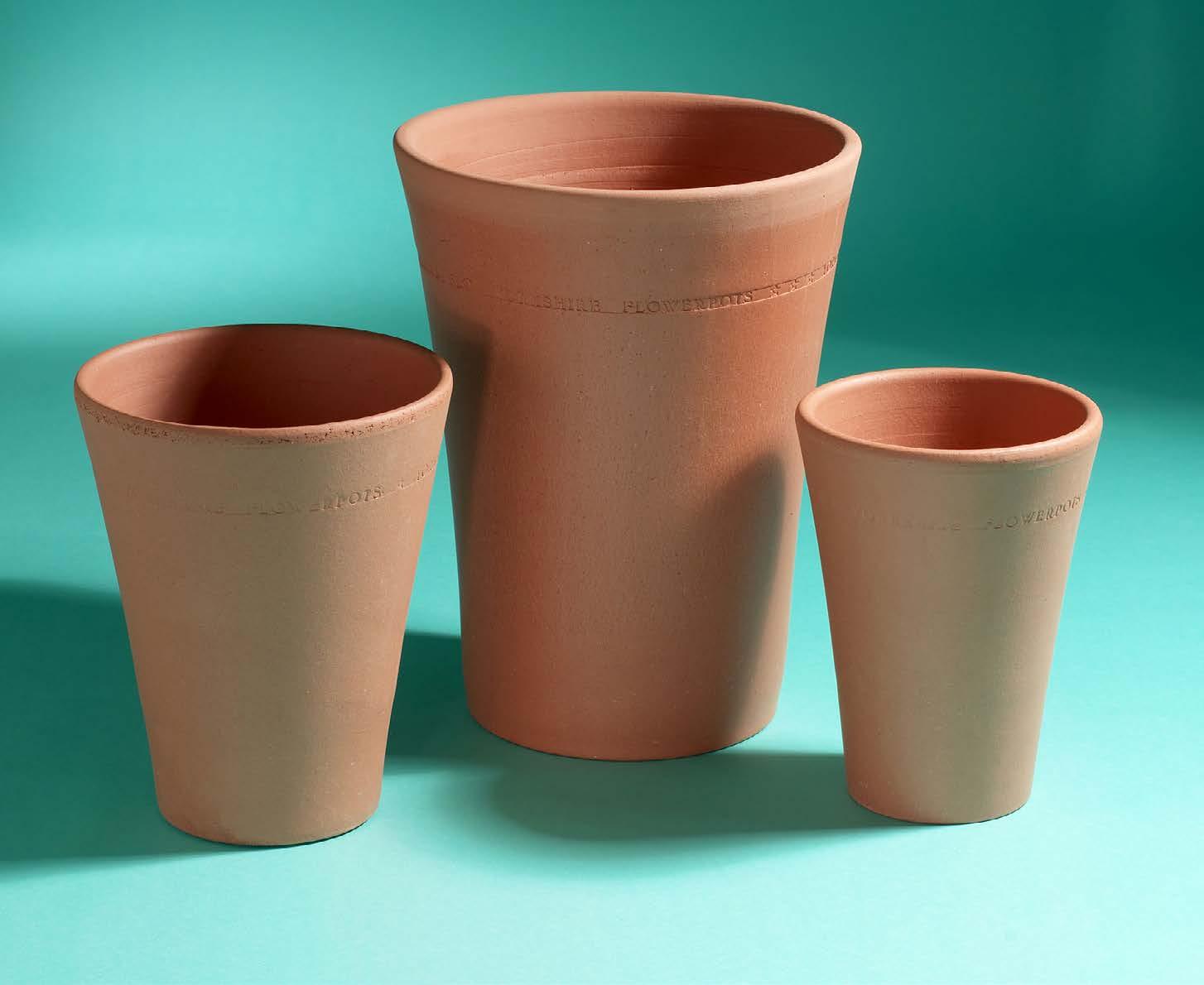
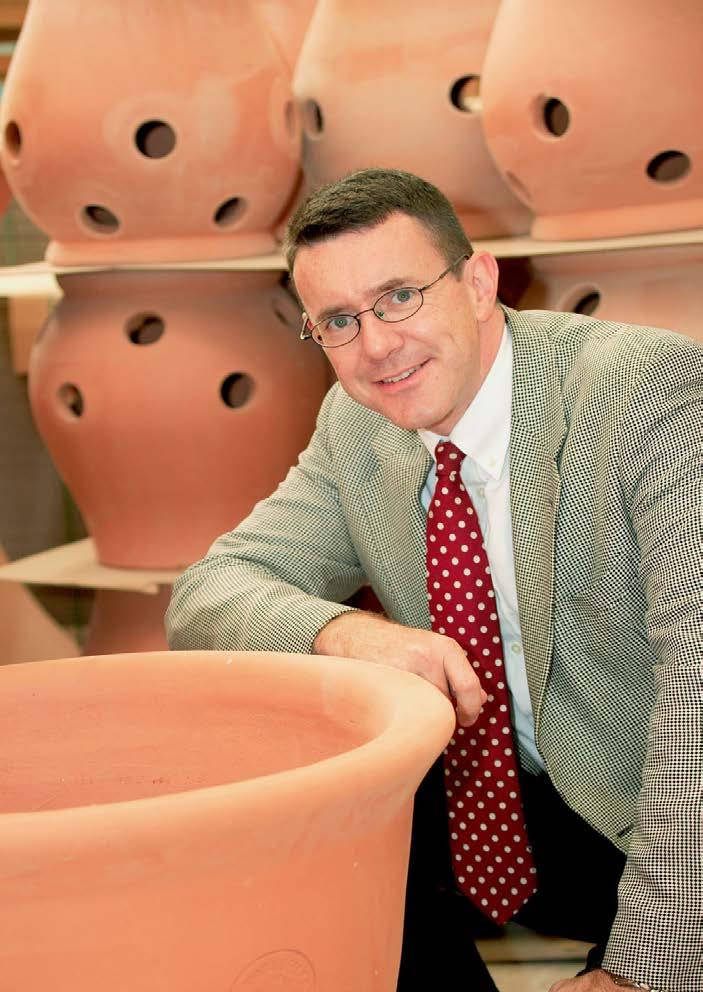
“The success of our Yorkshire Flowerpots business, developed with Design Council support, has offset much of the downturn in our traditional construction markets”
Edward Naylor - Chief Executive, Naylor Industries

We noticed a market failure in bringing innovative and useful products to markets. There was a mismatch of skills needed to come up with a new idea, and the capacity or business knowledge to effectively market them. Furthermore there was a lack of funding or investment opportunities for the ideas stage of development; many inventors and designers lacked confidence and motivation in developing their ideas and often did not have access to advice and guidance when they needed it.
In response to this, Design Council began to work with entrepreneurs, especially those whose innovations created social benefits, and those excluded from traditional routes to market.
Through Innovate for Universities (2002-2005) we worked with more than 30 major universities to help them commercialise their research and bring innovative products to market. Virtually all of the participants benefited from working with Design Council’s Design Associates. The Design Associates’ objective and ‘fresh’ perspective, together with their focus on the needs of the end-users, have helped entrepreneurs to develop clearer ways forward, clarify their objectives, and identify the most productive markets and routes to market for their technologies.
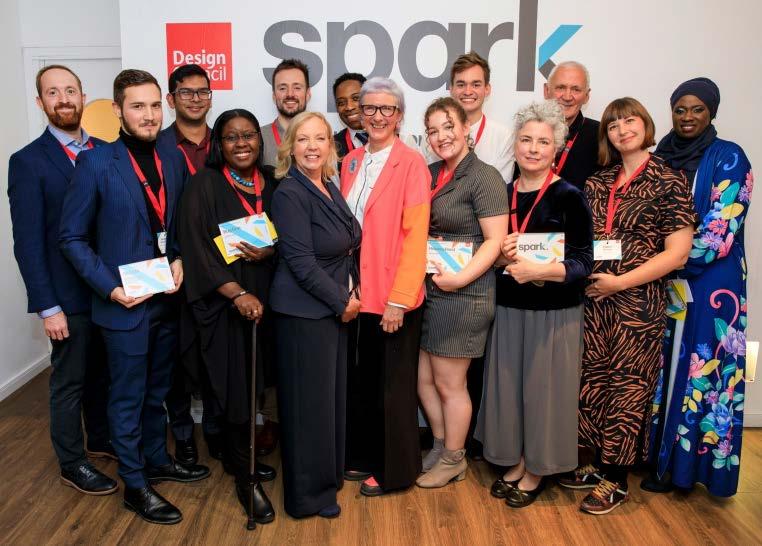
Addressed a market failure by supporting innovative, inclusive products to market
Design Council Spark (2014 – 2019) was an inclusive accelerator programme that supported hundreds of innovators to design, refine and prototype their ideas, by providing training, mentoring and funding. Across the lifetime of the programme nearly 1,300 ideas were generated through our calls to apply. Design Council went on to support 150 inventors through our Design Camp, helping to bring 44 ideas to market that collectively secured £1.8million in follow-on investment.
This programme encouraged people with good ideas that otherwise might not have developed them further. From our internal monitoring and follow-up interviews, we found that all finalists mentioned positive, lasting changes in the way they work due to Spark, both on their specific product and in other areas of their work or personal life. They felt more capable in knowing how to reach their end customer, opening-up professional opportunities and developing the confidence to demonstrate early prototypes.
9 in 10 respondents on Design Council Spark told us that their product would have progressed to market much slower without Spark, with one in three finalists saying they would have struggled to develop it at all.
Transform Ageing was a pioneering programme (2017-2019) – delivered in partnership with UnLtd and the South West Academic Health Science Network – that aimed to improve people’s experience of ageing through community, collaboration, social enterprise and design. The programme saw people in later life, social entrepreneurs and public sector leaders work together to explore challenges faced by ageing communities in the South West of England. Through collaborative design techniques and social entrepreneurship, the programme put people in later life at the heart of the design process.
The Transform Ageing programme generated £3.73m income over the three-years it ran and brought in £575k additional investment, reaching 89,500 people and creating 193 jobs.

“When I went in, I thought they made a mistake. Why did they get me - A 78-year-old lady? But I could bring things to the group that they haven’t experienced and mine was first-hand.”
Silvia - Retired, former carer (Transform Ageing)

Nine years ago, Owlstone Nanotech consisted of three researchers working in a basement laboratory in Cambridge University. Fast forward to today and the company is at the cutting edge of micro and nanotechnology after it developed a micro gas sensor that has won them a $4m contract with the US Department of Defense. Owlstone has also won $15 million in investment and is expected to play a key role in the future of medical diagnostic tools.

“What we learned from the Design Council continues to benefit the business, even all these years on. Making our technology intelligible to a wider audience and adopting a user-led approach has been invaluable.”
In 2016, three entrepreneurs participated on the Spark programme to develop their product Rockit – a portable baby rocker that attaches to prams and pushchairs to gently rock and soothe the baby to sleep. On the programme they benefited from mentorship, coaching and funding support led by Design Council. Since then, the team has flourished in the market – they raised £250,000 of investment on Crowdcube, had TV appearances, became Department of International Trade Export Champions, won numerous awards and have now launched a second product.
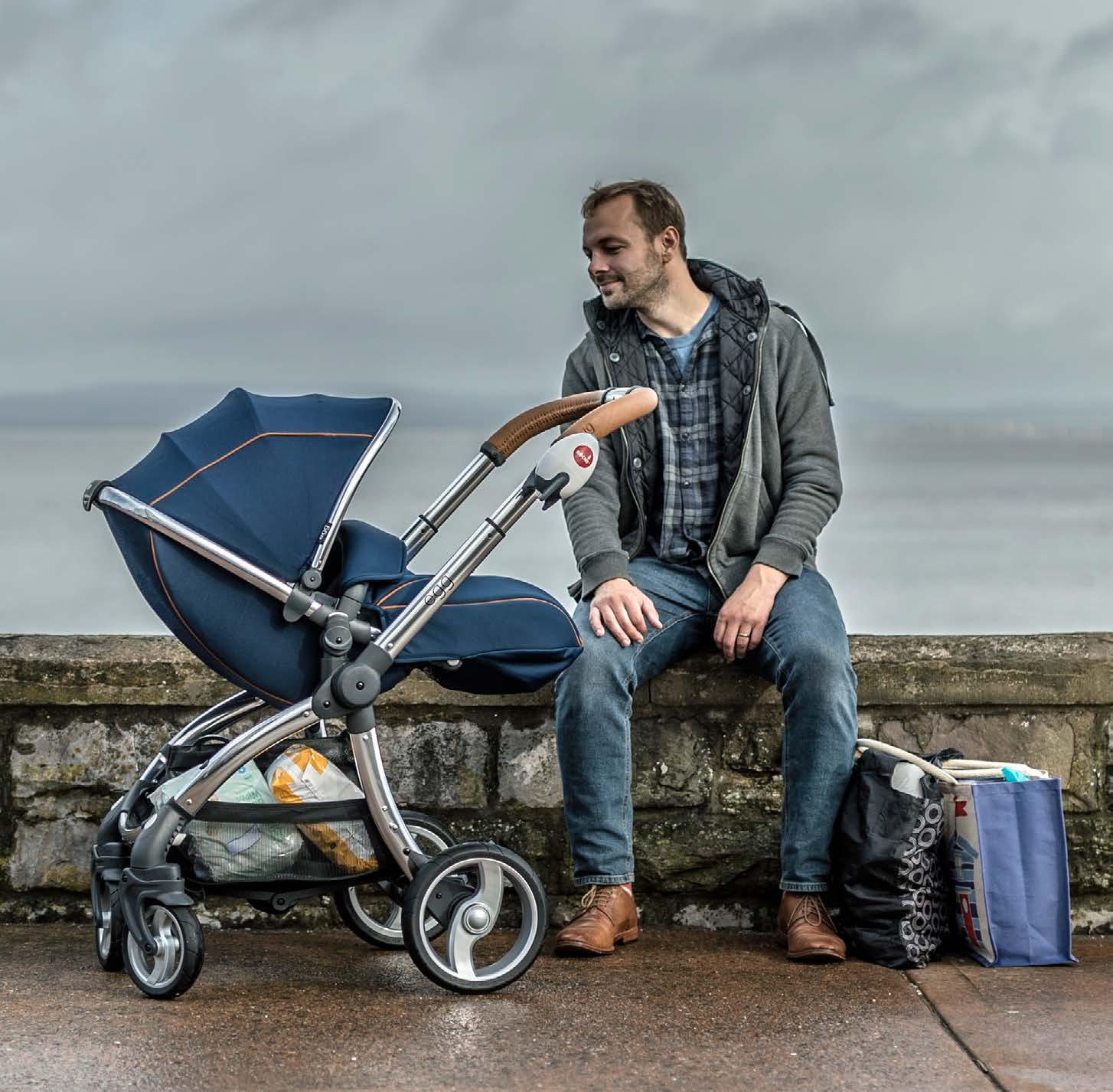
 Co-founder of Rockit
Co-founder of Rockit
“Without Spark and our mentors, we absolutely would not be where we are now.”
Matt Dyson
Investing in design can add real value to businesses, as our evidence shows. Using design to test and iterate earlier in the process of developing new products and services can de-risk innovation, reducing costly fixes later in the process. However, the misapprehension persists, which means that businesses with more limited resources, or who are facing other challenges that design could help them meet, are less likely to invest upfront in design. Many business leaders can also conflate the idea of using design strategically within the business with simply implementing new technologies.
Even with the offer of support that should improve their business performance, it can be difficult to engage small businesses given other significant pressures on their time. Our experience in delivering business support has taught us the importance of identifying when SMEs might be most receptive to support and where this might add most value –when they are managing change and on the tipping point of growth and are interacting with other local services. Since we delivered Designing Demand, the business support landscape has moved on. We believe that the most effective and efficient way of providing targeted support might be by integrating design skills into the business support on offer, whether regionally through growth hubs or to Innovate UK grant winners, or online to increase reach and accessibility.
Design is still seen as a cost, not an investment
It is important to engage businesses at the right time
Business models need to be able to adapt to change and build resilience for the coming years. There are significant changes ahead that will affect the nature of work and business, with both opportunities and risks posed by climate change, an ageing population and AI, as well as less predictable challenges like COVID-19. Design approaches can help plan and respond to these changes. Likewise, design encourages us to think broadly and inclusively, from thinking specifically about individual business practice to considering supply chains and wider eco-systems, including how we can think about performance in economic, social and environmental terms.
Design can help build resilience to challenges and create opportunities for the future
What’s the challenge we’ve identified?
Design is still underused by many local government professionals as they seek to develop and deliver complex public services with fewer resources
What did we do and what have we achieved?
Demonstrated the value of a design through national Challenge programmes
Built design capability among public sector service providers and showed the importance of putting people at the heart of services
Created advocates for design approaches within the public sector
What have we learnt?
Public service teams may need additional and ongoing support to implement service redesign
Getting senior leadership engagement is critical
There is a need to think systemically and deeply about challenges
Since 2015, we have been working in partnership with Local Government Association to deliver our Design in the Public Sector programme. We have helped these local authorities address a range of issues, including: preventing social isolation, taking local action on climate change, and improving pathways for domestic violence and abuse services.
We have been instrumental in helping these local authorities secure almost £400,000 in public funding to work on local social challenges, achieving outcomes such as: increasing the number of vulnerable children into supportive services, increasing digital access to healthcare, and making the planning process more efficient.
in public funding secured
cross-sector teams in 10 Challenge programmes
We enabled over 60 cross-sector teams to develop new products or services through our Challenge programmes. Key outcomes from these programmes included:
Families feeling more connected to their communities and a 25% reduction in parent stress (Knee-High Challenge).
related products
Fast-tracked development of 15 new privacy and dignity related products in six months (Design for Patient Dignity programme).
£1
Improved A&E patient waiting experience and a return on investment of £3 worth of benefits to £1 spent on design solutions. (Reducing violence and aggression in A&E programme).


Increasingly, the public sector is being asked to deliver complex services with fewer resources. This is the context of significant societal challenges – the range of social, cultural, political, economic, commercial and environment factors that impact on health inequality and personal wellbeing in the UK being one example. There is a need to support new ways of working and delivering services with a focus on prevention and empowering local citizens. Achieving these efficiencies will require a long-term shift away from delivering remedial services tackling challenges as they arise, and towards designing a more preventative approach. An effective public sector that delivers value for money is one with a clearly defined mission and outcomes, which also empowers citizens to shape the design and delivery of their local services. It requires thinking not just about individual services, but across systems and sectors. Design as a skillset and a mindset can support this transition.
In the public sector there has been an awakening in recent years to the value of design. As a result, service design is becoming a key part of local authority provision, making many key public services more responsive and better able to deal with the challenges of the modern world. But there is still significant untapped potential for expanding design methodologies and skills into our public sector, particularly in the planning space. Resource constraints are a constant struggle for central government and local authorities, but people’s needs can often be met through innovation and the willingness to re-frame challenges and focus on the service users.

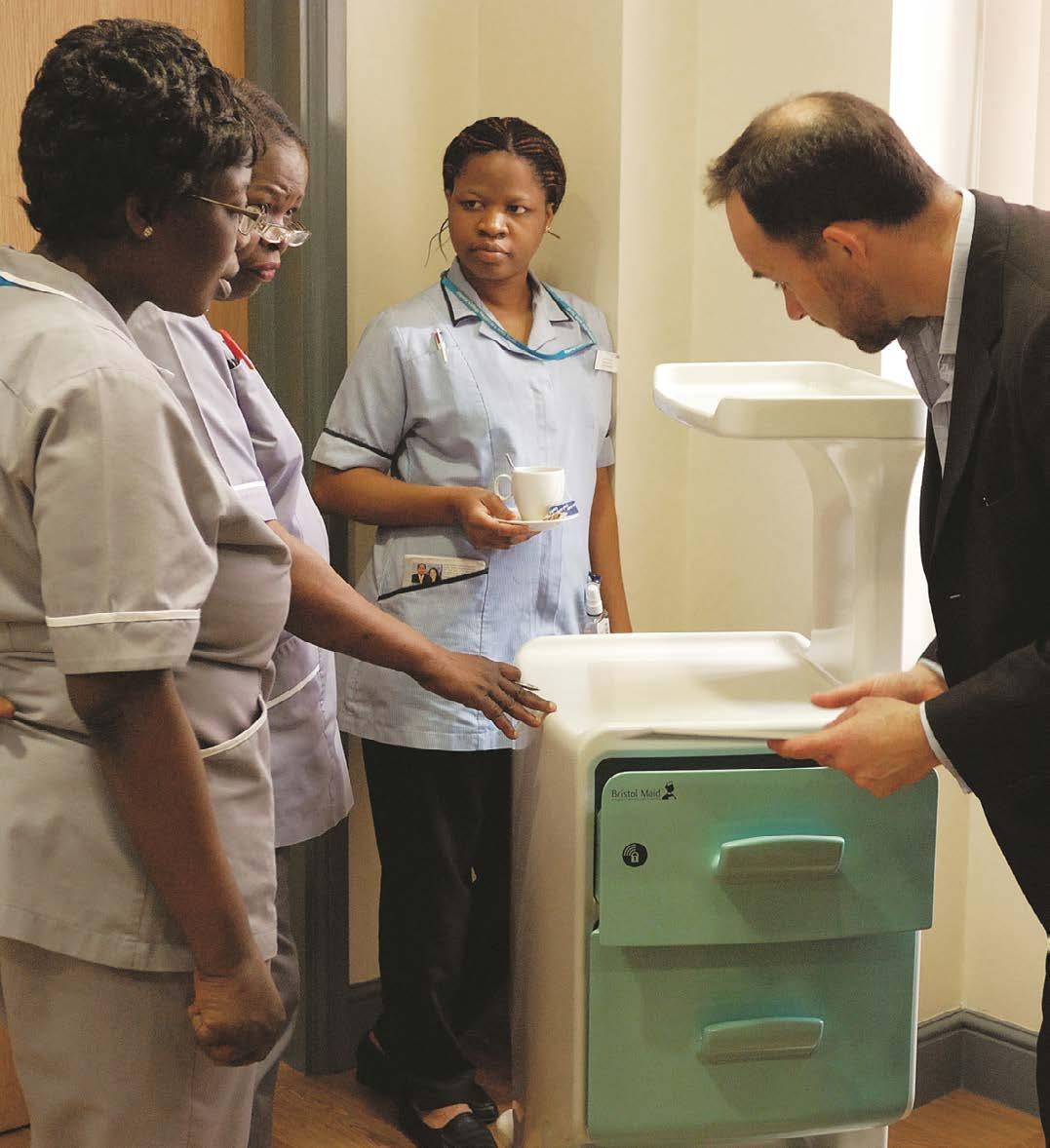
Working closely with national government departments, from 2008 to 2016 we ran ten Challenge programmes aimed at demonstrating how a design approach could be used on complex social challenges, such as health and wellbeing, crime and employment. Our first challenge was ‘Design Bugs Out’ in 2008 with the Department of Health and the NHS, with the aim to identify an innovative, workable and sustainable solution to reduce patients’ exposure to transmittable diseases during their stay in hospital.
A Challenge programme typically involved:

1. Deep user research and ethnography to better understand the issue, and often reframe the challenge.
2. Designers supported with funding, expert mentoring and access to target end-user groups to develop testable prototypes of their design-led solutions.
3. After development, shortlisted projects invited to pilot and showcase how design, with great innovation and minimal risk, can effectively confront complex social challenges.
Independent evaluations have demonstrated the positive impact of these design-led approaches, such as:
- The Knee-High Challenge produced innovation that led to families feeling more connected to their communities and a reduction in parent stress.
- Our Working Well Challenge resulted in young people gaining transferable skills, building confidence and finding employment.
- Design for Patient Dignity supported the development of 15 new privacy and dignity related products that were easy to use, empowering for patients and protected their dignity, modesty and confidentiality.
Over 60 teams developed new products or services, many of which are still in the market, such as:
- Buddi band (Living Well With Dementia). Buddi got to prototype stage during the challenge, and now supports service users across more than four-fifths of UK local authorities, as well as Government clients around the world.
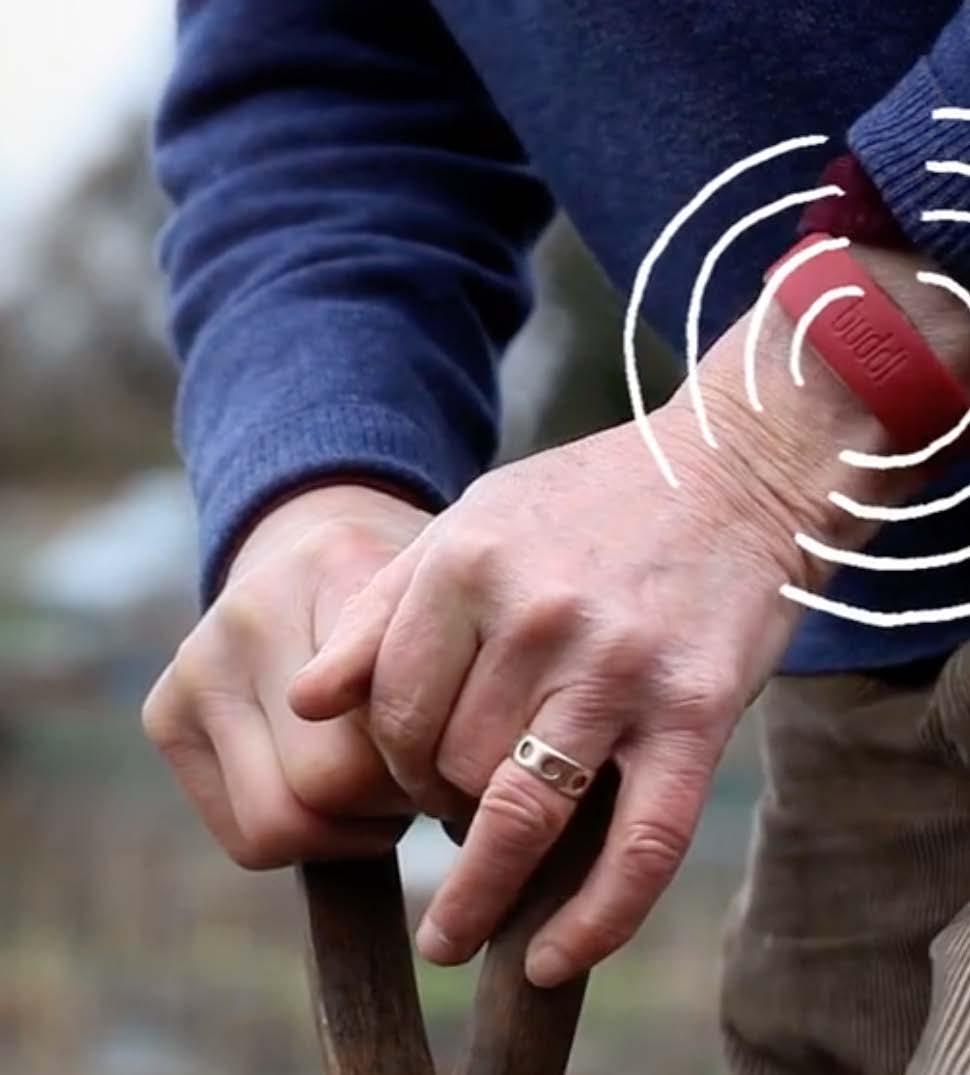
- PlantLock (Design Out Crime). This can be seen safely and beautifully demarcating bike lanes across London, the United States, Europe and even in a bike shop in Melbourne, Australia.
- Pearson Lloyd’s A&E Guidance Solution (Reducing violence and aggression in A&E). Now implemented in seventeen hospitals in the UK and Australia.

From our learning with Challenge programme, we knew that the first part of the design process, in which stakeholders should come to a shared understanding of their challenge and their user needs, was too often rushed or overlooked. Our Design in the Public Service (DiPS) programme was developed in 2013 with the specific aim – in addition to developing better public services for local communities – of developing the design skills of those developing, commissioning and delivering local services. There was a focus on the first phase of the Double Diamond: encouraging a step back to explore the challenge, redefine the challenge and take forward ideas to prototype, test and iterate.
- Since 2015, DiPS has been delivered in partnership with the Local Government Association, in more than 70 Local Authorities throughout the UK.
- Together, they have received almost £400,000 in public funding to work on local social challenges.
This is done through a series of five-day workshops and ongoing mentoring with our Design Associates, where the participants (who can range from local councillors to nature conservationists, planning officers to policemen) are guided through the Framework for Innovation and taught design techniques including user research.
As one participant told us: “Until now, we have always done work that is delivered ‘to’ families. They were never engaged at the beginning of the programme. From now on, the collaborative approach will always be an essential part of the work I do”.
We have used this model as part of many public sector innovation programmes. The figures below show our success in the last year.
Some 86% of participants considered design approaches ‘very relevant’ to the public sector after the programme.
Participants gained specific design skills, such as confidence in challenge exploration, increased by as much as 40%.
Built design capability among public sector service providers and showed the importance of putting people at the heart of services
9 in 10 participants felt that the programme helped clarify their challenge, making it easier to move forward.
“Working in local authority settings in a demanding, resource-limited role can often make you very reactive. This means that whilst you deliver (something), it is not always the best or the most necessary solution. This [Public Sector Innovation programme] taught me to take a massive step back and really understand the problem before even considering the brief.”


Violence in our A&Es costs the NHS at least £69m a year in staff absences alone, with as many as 59,000 physical assaults on staff a year, a figure which continues to rise. A normal response would have been to install glass screens and security guards at reception. But by using the Double Diamond approach and spending time with patients in A&E to understand their experiences, they realised that the real issue is lack of information about what is going on, which is exacerbated when patients are worried about themselves or loved ones. This led to solutions around better signage which reduced the number of incidents of aggressive behaviours from patients by 50% in the three hospitals where it was trialled and led to improvements in patient experience. To date,17 NHS Trusts have installed the solution with warm leads in implementing this system in countries across Europe and beyond.
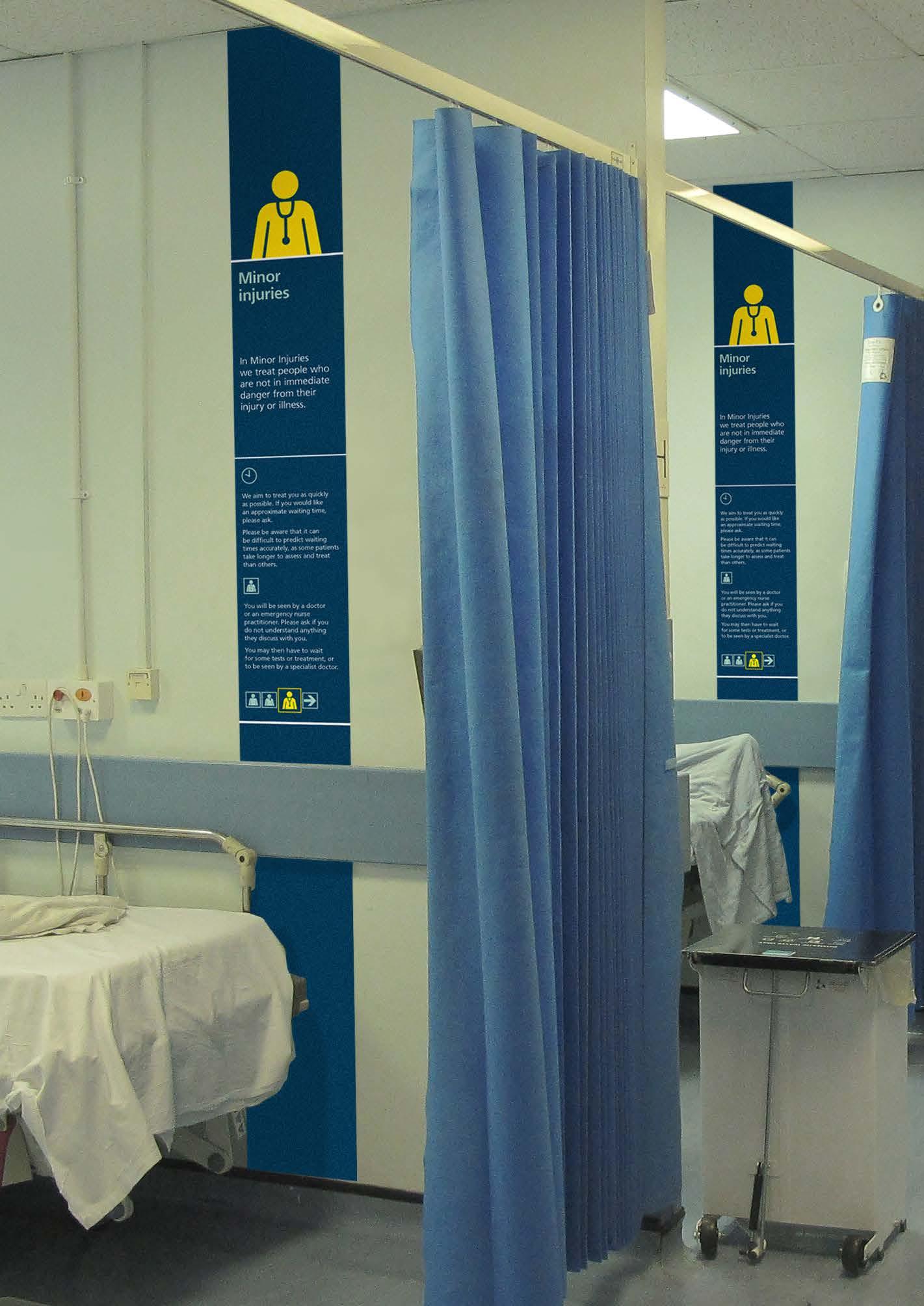

As well as adding value to specific challenges in the public sector, our programmes also create advocates for design approaches within the public sector, who can apply their design skills and mindsets to further challenges.
In 2019, in our public sector innovation programmes:
- 2 in 5 participants came to us with only a limited knowledge of design.
- Some 93% of participants in our public sector innovation programmes shared approaches they learnt through the programme with colleagues.
“Bringing together colleagues from across health, adult social care and the voluntary sector has been really powerful in its own right... the shared experience of going through [the programme] will enable us to continue to use the tools and techniques long after the programme has ended, because we’ve all had a stake in it.”
“We genuinely believe that public sector leaders need to acquire design skills if they are to stand a reasonable chance of reshaping and refashioning the services for which they are responsible. Design offers a fresh approach to rethinking policy, redrawing professional practice and reshaping service delivery.”
Barry Quirk, Chief Executive of Lewisham Council, London
Participant, East Sussex coastline programme
“This was a brilliant ‘gamble’ for me professionally to bring this together (not really a gamble though as I knew the methods and approach would gain traction).”
Darrel Gale, East Sussex County Council
In 2018, Design Council supported Southwark Council to increase the uptake of its free NHS health check – designed to spot early signs of stroke, kidney disease, heart disease, type 2 diabetes or dementia. At the time, around half of those invited for the check did not attend. As a part of our Design in the Public Sector programme with the Local Government Association, we helped the council look into the reasons behind this and engage people in different ways. The following year, Southwark became the first local authority to offer a digital version of the check, saving people the need to book face-to-face appointments. Since the trial launched in January 2019, over 300 people who had not taken up a face-to-face check went on to complete the digital version. Some 10% of participants were found to be at high risk of cardiovascular disease and have since been advised to contact their GPs.



Design Council worked alongside Northumberland County Council, Amble Development Trust and the design agency TEAM, with the community of Amble after it lost the last of its major employers in 2010. With help from one of our experienced Design Associates starting in 2012, residents worked together to redesign their existing services and reinvent the fishing port as a major tourist destination, creating new jobs and opportunities. In 2015 Amble won the High Street of the Year award (Coastal Community Category) and in 2019 it was listed in the Sunday Times as one of the top places to live by the sea. Today, more than £8m has been invested in Amble’s regeneration with a further £10m earmarked for future projects.

Our work in the public sector has primarily been in the first diamond in the Double Diamond. We see gains in various design skills from public sector participants, with slightly less development in confidence around testing and prototyping. There can be a real difference in understanding in principle how to take forward ideas to test and prototype, and navigating the development stage, where teams can face additional challenges around support to continue development or secure follow-on funding given the pressures on public sector resources. We know that design involves continuous feedback and iteration of the service. Providing interim care and mentoring could give security and additional benefits to teams moving into the second diamond.
Taking a design approach can be a leap into the unknown for those that have not used similar approaches before. It requires confidence to invest the time and resources in a process that will challenge understanding of local need and what should be done. While this takes time in the initial stages, it can reap wider benefits in the long run. Advocates for design at a senior level, to ensure the necessary resources are allocated and that there is long-term commitment, are critical to achieving positive results. This is the reason leadership is one of the key components of our Framework for Innovation, as it can act as an important enabler or barrier to design projects.
Sometimes a helping hand is needed through development
Public service teams may need additional and ongoing support to implement service redesign
The projects we see in our public sector innovation programmes are often complex, interlinked and require more than one answer. Increasingly, there is a need to work systematically and deeply on challenges. We have been looking at this particularly on issues relating to the wider determinants on health and wellbeing, undertaking work with the Health Foundation and Local Government Association. We need to look beyond individual sectors, and explore the value in convening public, private and third sectors to explore innovative solutions, as we have done on Transform Ageing.
What’s the challenge we’ve identified?
Design is not necessarily prioritised among all stakeholders working in the built and natural environment, so we miss opportunities to create high quality housing and neighbourhoods
What did we do and what have we achieved?
Influenced guidance and developed tools that prioritise higher standards of design quality of place
Provided strategic advice and design support, locally and nationally
Built the design skills of built environment professionals
What have we learnt?
There’s a need for national coordination on design quality
There’s value in thinking about design earlier in the process
The value of design in the built environment is not purely economic
We have provided design support to more than 1,000 unique schemes in local authorities and NGOs since 2011.
In 2009 Commission for Architecture and Built Environment (CABE) pioneered the design review: a site-specific, peer-reviewed scheme for architecture and built environment planning.
This quickly became the industry standard, and the practice was formally written into the National Planning Policy Framework in 2012 and the Building Better, Building Beautiful Commission, and informed the Greater London Authority Design Review Charter.
We have provided independent and impartial recommendations to prioritise consideration of design quality by government.
Key examples include our work on the National Design Guide, High Streets Task Force, as well as calling for a national Design Quality Unit.
For example, our work with Network Rail and Highways England.
We have worked across all the policy areas of key interest to national and local government, as well as NGOs and charities, including: crime reduction, building beautiful places, community engagement, housing for ageing populations in rural areas.

The quality of the built and natural environment around us has a significant impact on our lives. It can transform people’s quality of life, stimulate the economy, enhance the environment and help address the climate emergency. However, the complexity of development projects and the variety of stakeholders involved can make it challenging to realise this potential and create places that work for everyone.

- Our Healthy Placemaking research highlights the barriers faced by built environment professionals in prioritising healthy placemaking, such as differences in ways the public are consulted, the perceived cost of implementing healthy interventions, and less emphasis being given to our indoor environments.
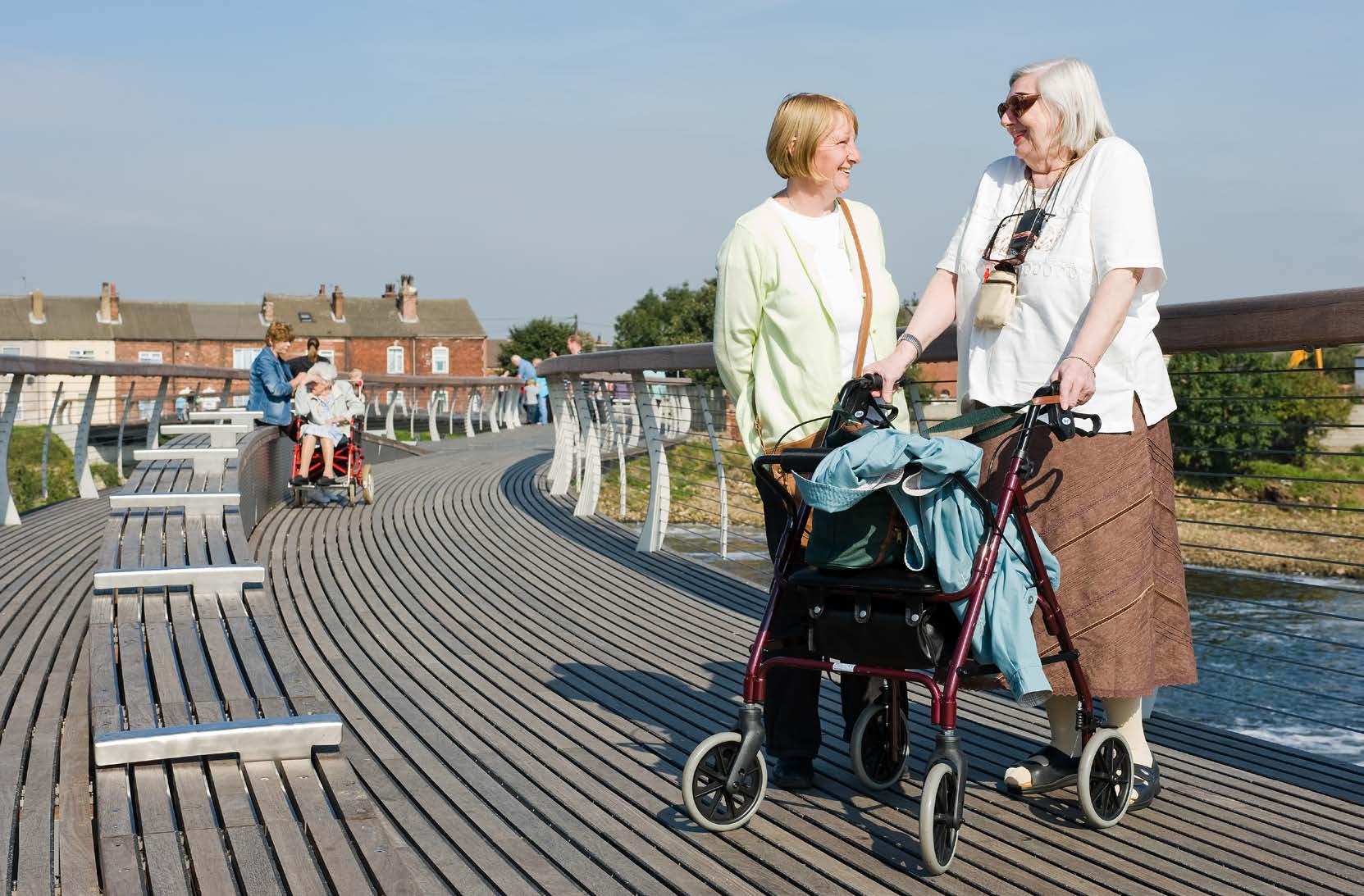
- The Place Alliance Housing Audit (2020) found that three-quarters of new builds in England were ‘mediocre’ or ‘poor’. Developers are not incentivised to build well-designed projects. Additionally local authority staff still lack design skills and can be reluctant to change or slow to implement new guidelines.
The value of an inclusive design process is in putting people at the heart of decision-making. However, more needs to be done to enable this to happen consistently and meaningfully. Design needs to be better integrated into strategic planning at a local authority and national policy level, so we create places that work for everyone.
Design Council has been delivering independent and expert design consultation to professionals in the built environment for decades, supporting them to overcome design quality challenges.
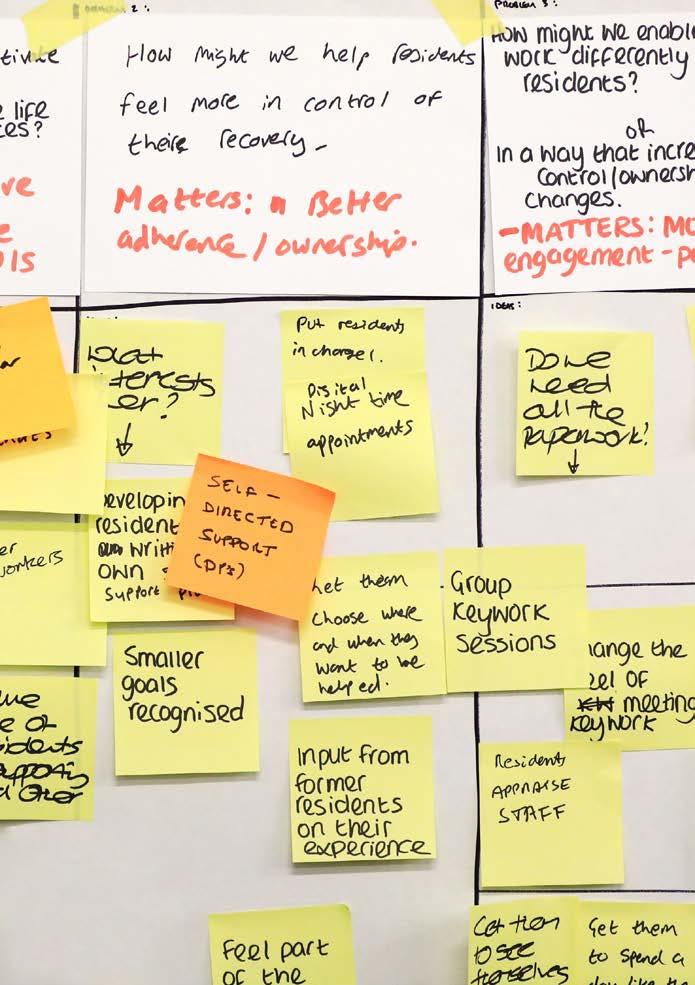
The Commission for Architecture and Built Environment (CABE) was established in 1999, and later integrated into Design Council in 2011. During that time, we have built up a world-class expertise in the built and natural environment, local knowledge and a specialist network of 450 built environment experts to help clients achieve their objectives, drive growth and create more sustainable, equitable developments here in the UK and overseas.




We have worked across all the policy areas of key interest to national and local government, as well as NGOs and charities, from creating sustainable communities, protecting heritage, reviving high streets and instating design principles for key infrastructure partners.
Past CABE and current Design Council publications on place and environment consistently in demand:
151,700 people have viewed our Architecture and Built Environment content online, and the most popular categories were 'places', 'inclusive' and 'environment'.

Delivered key guidance for the sector, such as:
- The National Design Guide (2019): this was co-delivered by Design Council and Tibbalds Planning and Urban Design as part of the revised suite of planning practice guidance for the National Planning Policy Framework. This guidance sets out the characteristics of well-designed places and demonstrates what good design means in practice.
Provided recommendations and influenced policy and practice, such as:
- The revised National Planning Policy Framework (NPPF). Significant changes were made to the NPPF following our recommendations that it needed to have design as its heart.
- The Building Better, Building Beautiful Commission, an independent body set up to advise government on how to promote and increase the use of high-quality design for new build homes and neighbourhoods. Their final report, Living with Beauty (2020), reflects much of our evidence, and the publication positively references Design Council’s contribution on several occasions.
- The High Streets Taskforce, where we are working to support local leaders to breathe new life into high streets and town centres, as they adapt to new consumer habits.
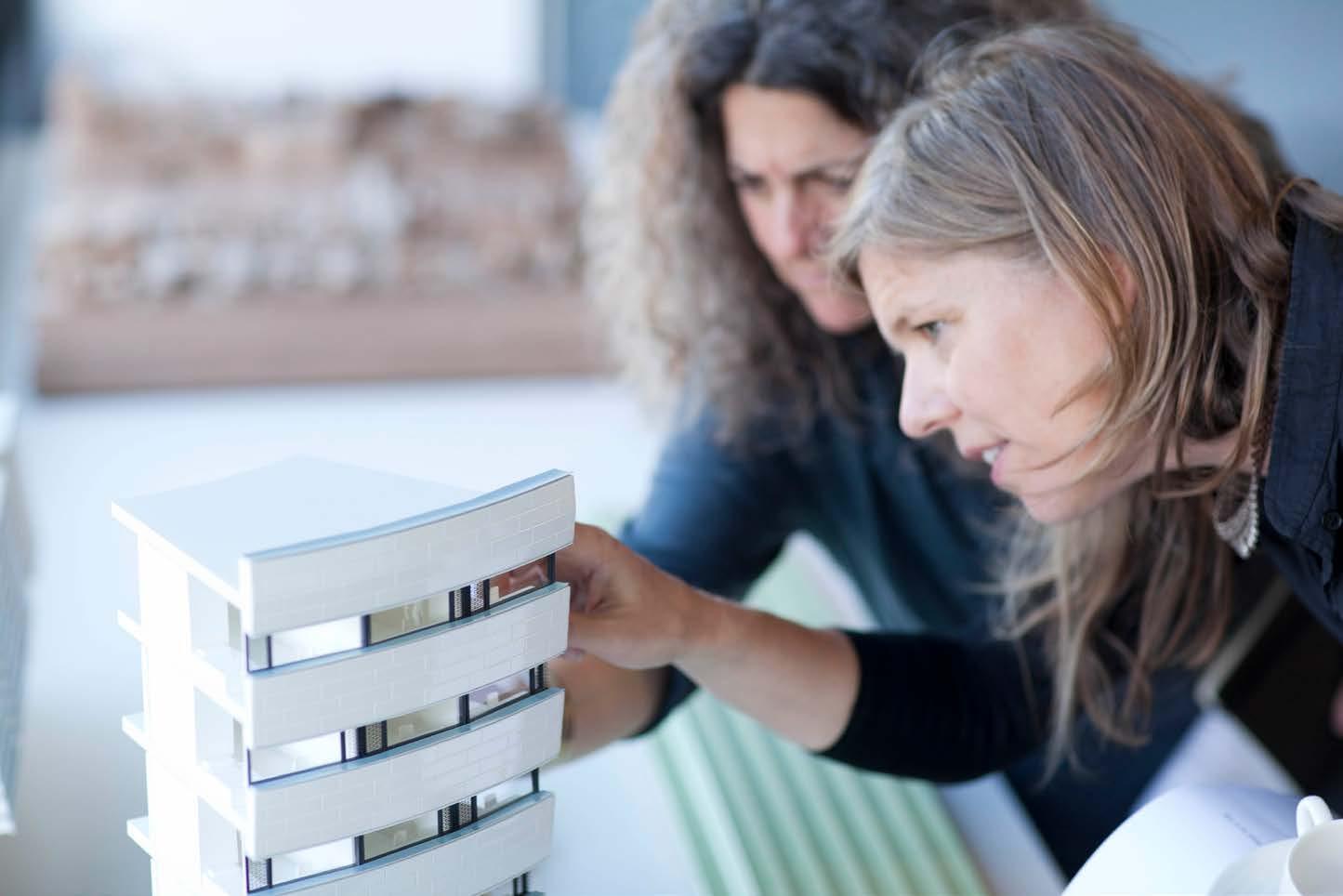
Influenced guidance and developed tools that prioritise higher standards of design quality of place
Developed practical tools to support the sector, such as:
- Design review: Research from Place Alliance’s Housing Audit found that the most impactful tool for ensuring good design is embedded into site-specific and peer-reviewed schemes. First proposed by CABE in 2009, the design review quickly became the industry standard, recognised by all three professional architecture and planning bodies: the Landscape Institute (LI), Royal Institute of British Architects (RIBA) and Royal Town Planning Institute (RTPI). At CABE’s recommendation, design review panels were set up in every London Borough with dozens of private and public sector organisations affiliated and an extensive design network that delivers them around the country at a regional level. Widely regarded as best practice in inspiring higher quality design, the design review process is now formally embedded into the National Planning Policy Framework.
- Where we have delivered design reviews:
- 9 in 10 said the scheme had improved as a direct result of the design review.
- 94% said that their designs have changed to some extent following design review, and 1 in 5 had changed significantly in light of the design review.
- 83% of design teams, 79% of Local Planning Authorities and 73% of planning consultants agreed that the design review had inspired higher quality design.

First proposed by CABE in 2009, the design review quickly became the industry standard.
Design Council is part of a consortium delivering the Home of 2030 initiative, to develop practical and scalable ideas for future homes which are suitable for all ages and environmentally sustainable over their entire lifespan. We have developed the public vision for the initiative: encouraging local people to think innovatively about the homes that they, their friends and their family might want and need in the future. This was done through a series of local design workshops and testing insights with a larger representative cohort, to gain perspectives from over 2,000 people in 2019.
98% of participants said they had thought differently about what’s needed from homes in the future.

“Great to be a part of how we might meet the challenges of affordable, low-carbon homes and climate emergency. The rate of change we have to achieve is daunting and workshops like this gives us the space to imagine how this can be done.”
Craig White, Home of 2030 workshop attendee
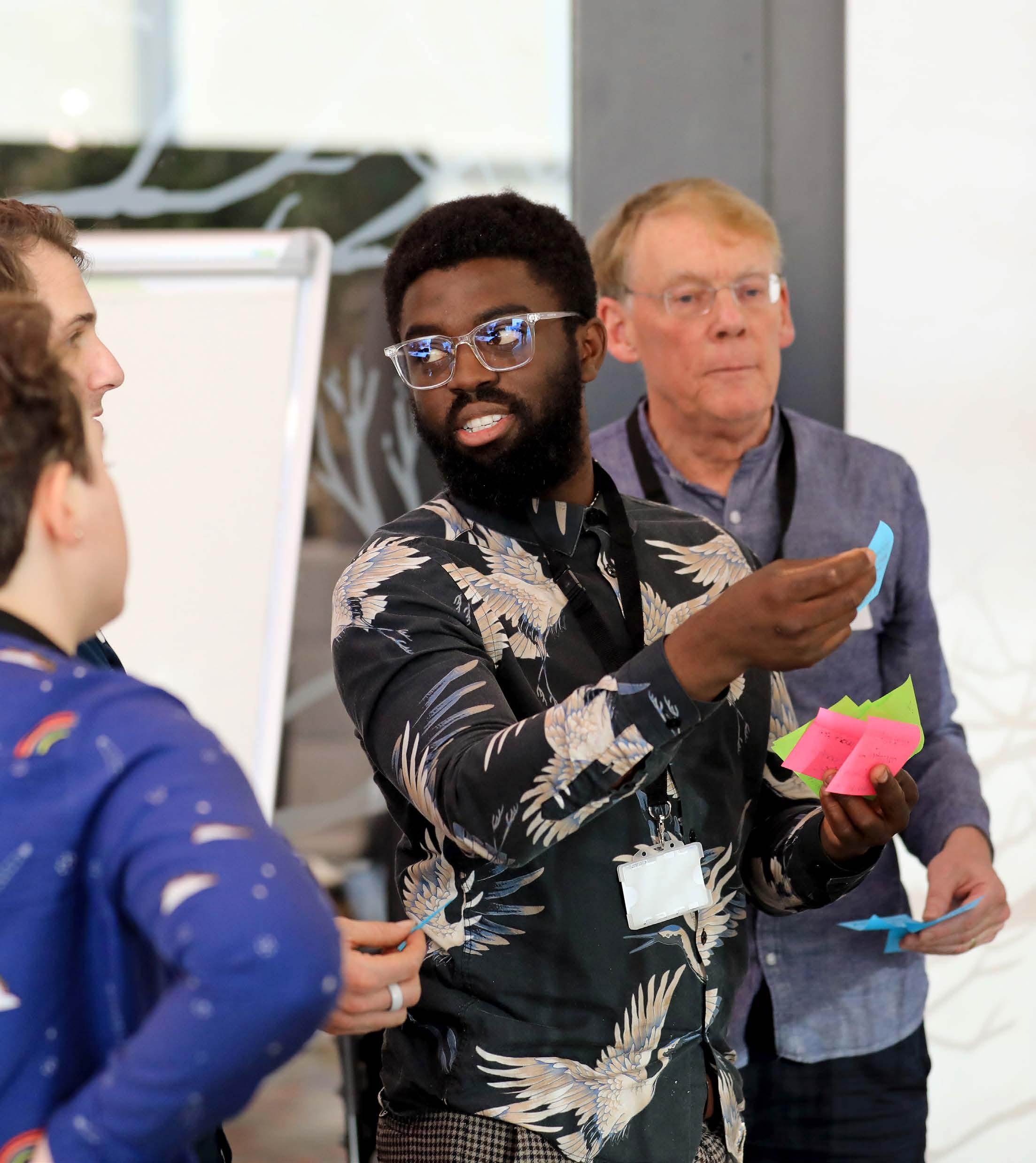
100% of participants said they had a chance to contribute their perspective.
Design can be the golden thread running through the planning and development of all UK infrastructure, ensuring that people are put at the heart of decision-making.
We support a wide range of clients – including major infrastructure bodies, local authorities, housing authorities, foundations and trusts – working across business support, design advice, development support and policy.
Our work with organisations such as Network Rail supports them to use design strategically within their organisations. Well-designed infrastructure can bring us closer together, create cohesive communities and stimulate local and regional growth across the UK.
We also work locally through a number of local authorities, supporting them in their work, while gathering insight into how the planning process is working on the ground and identifying key barriers and opportunities. For instance, we produced an annual review for Oxford’s Design Review Panel, reflecting key themes important to their locality, including balancing increasing density with the vernacular and character of Oxford and designing for an ageing population. From 2017/18, the Design Review Panel, which includes 40 built environment experts, undertook 52 reviews and two policy reviews for Oxford City Council.

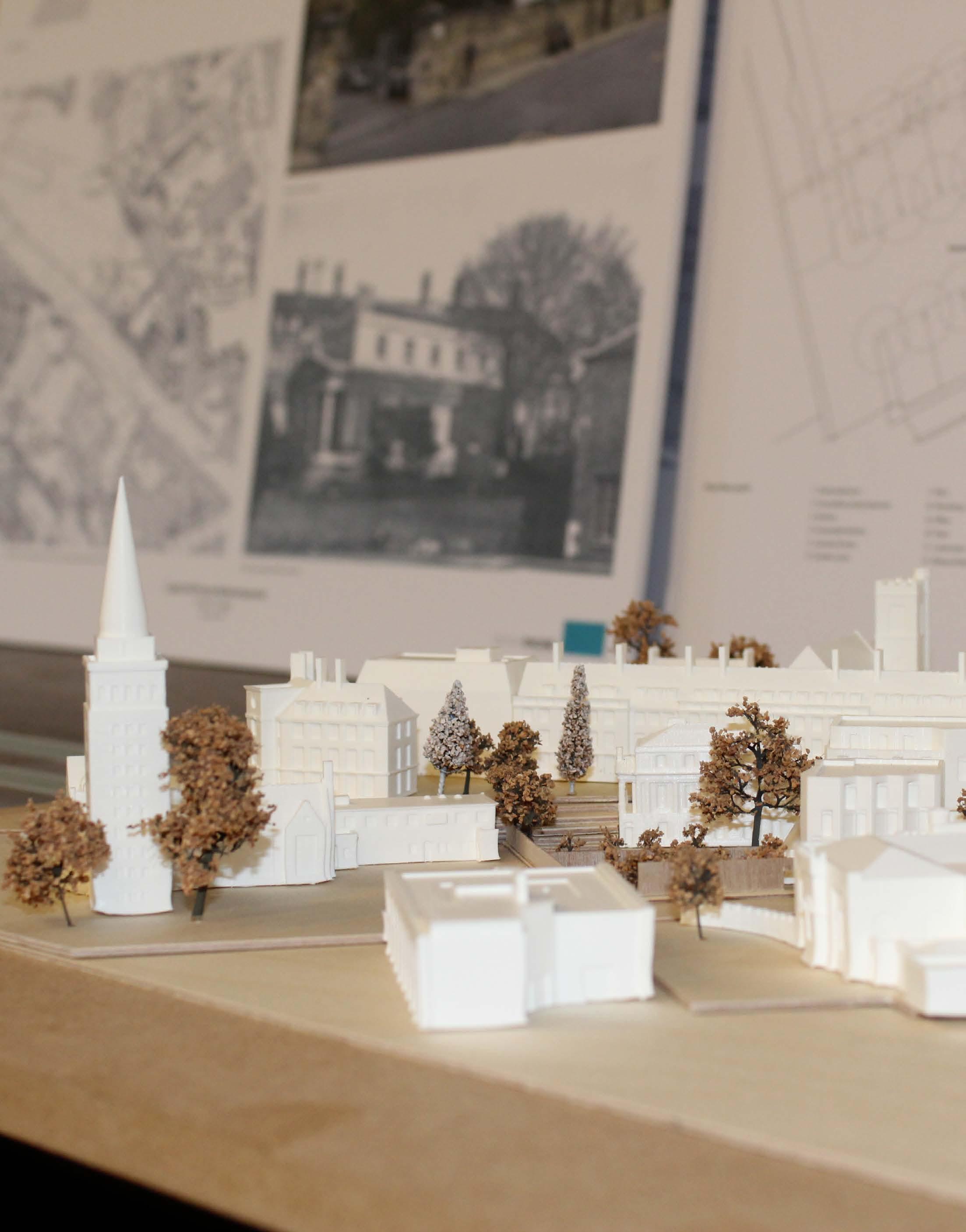
Since 2017 we have worked with Network Rail providing independent design advice, support and capacity-building to help enable a design-led approach to rail infrastructure.
- From an initial series of design reviews on projects being commissioned across their network, we helped Network Rail better understand where and how design could improve their performance.
- Senior Network Rail officials including Chair Sir Peter Hendy wanted to see how a designled approach to Network Rail’s assets could help them deliver more effective projects and meet their objectives. Now, as Network Rail’s strategic partner on design, we work on everything from communication and technical architectural advice, to running engagement events like ThinkStation, to future-proofing their vast estate.
- So far, we have supported the development of Network Rail’s Design Principles, analysed existing processes and frameworks, and created new design mechanisms and support on development of design governance. A total of 38 design processes so far have been implemented, and design thinking has been embraced across the organisation.
In 2019 we delivered ThinkStation, 11 workshops with 350 stakeholders exploring Network Rail’s nine recently adopted principles of good design –developed with our support – and have encouraged participants to consider how each principle can be applied to future small to medium railway stations. This is a fundamental part of Network Rail’s commitment to be a more customerfocused, service-driven organisation that puts passengers first. ThinkStation feedback will inform recommendations for the brief of an international station design competition which will launch in 2020.

93% of participants said they had thought differently about what’s needed from future passenger hubs.
“In creating the next generation of railway stations, we want to put passengers and stakeholders at the heart. That is why we commissioned Design Council to deliver ThinkStation”
Anthony Dewar, Professional Head of Buildings and Architecture, Network Rail
98% of participants said they had a chance to contribute their perspective.
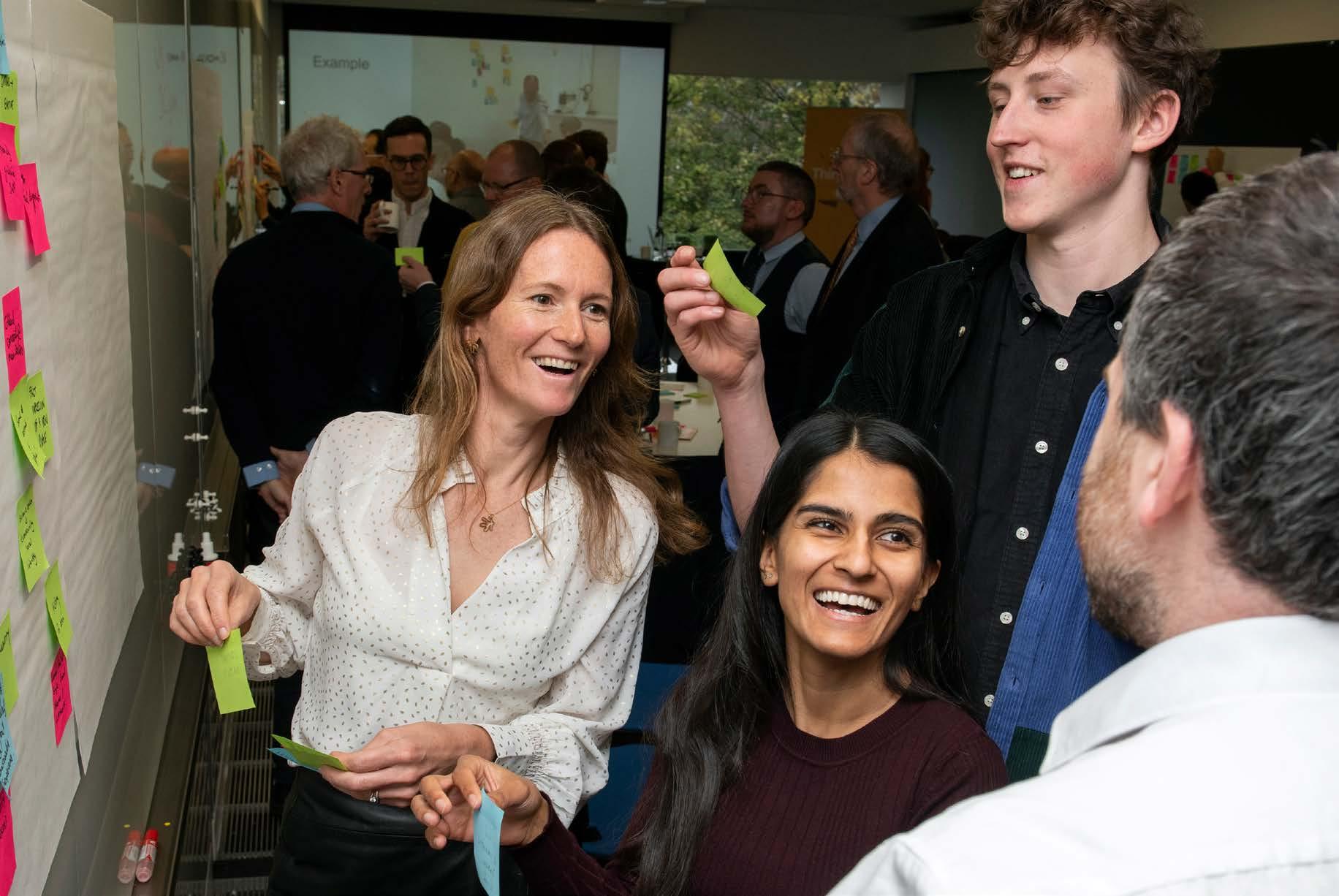
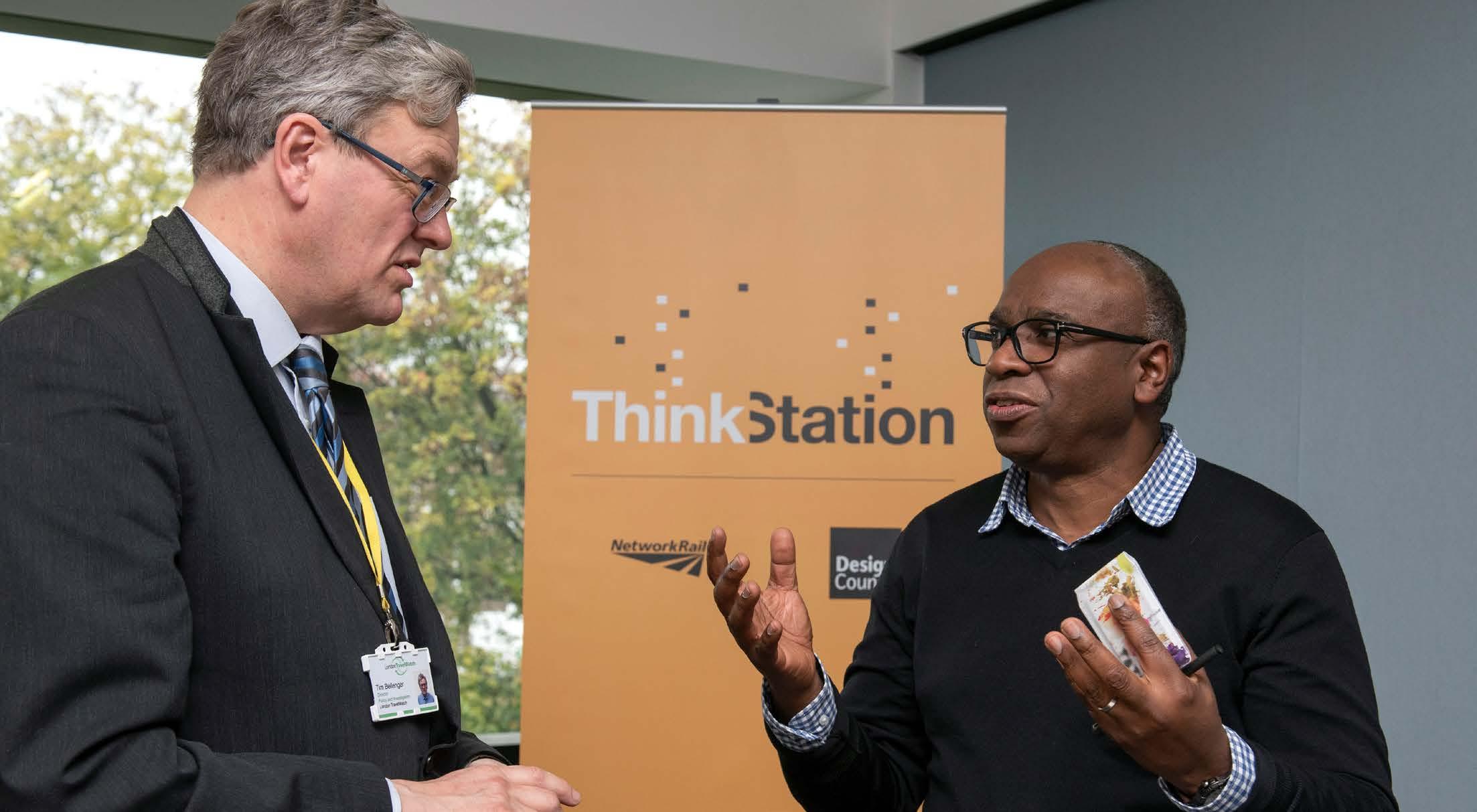
Design Council works to build capacity and support continuous learning within the built environment sector and its professionals. One of our key priorities is increasing skills and understanding around inclusive design, which we believe is the responsibility of everyone working in the built environment.
Our Inclusive Environments programme at Design Council aims to raise awareness of the importance of designing places that meet the needs of the diversity of people who want to use them. It has a number of components, including:
- An online hub of inclusive design best practice guidance for built environment professionals covering buildings and outdoor spaces, in all phases of development including planning, design and construction, through to management of those buildings and places.
- A free online Inclusive Environments training course, introducing inclusive design relevant to all built environment professionals. Over half of those registered for the Continuous Professional Development (CPD) – most of whom were qualified architects – had received no prior training on inclusive design, showing the need for this type of training. In 2019, we also worked with Transport for London to deliver a series of inclusive design workshops for their staff.
All respondents strongly agreed they were ‘enthusiastic’ about inclusive design following the workshop, compared with only 56% beforehand.
Respondents’ knowledge of inclusive environments increased by 60%.

All respondents said they would feel confident explaining inclusive design to a friend.
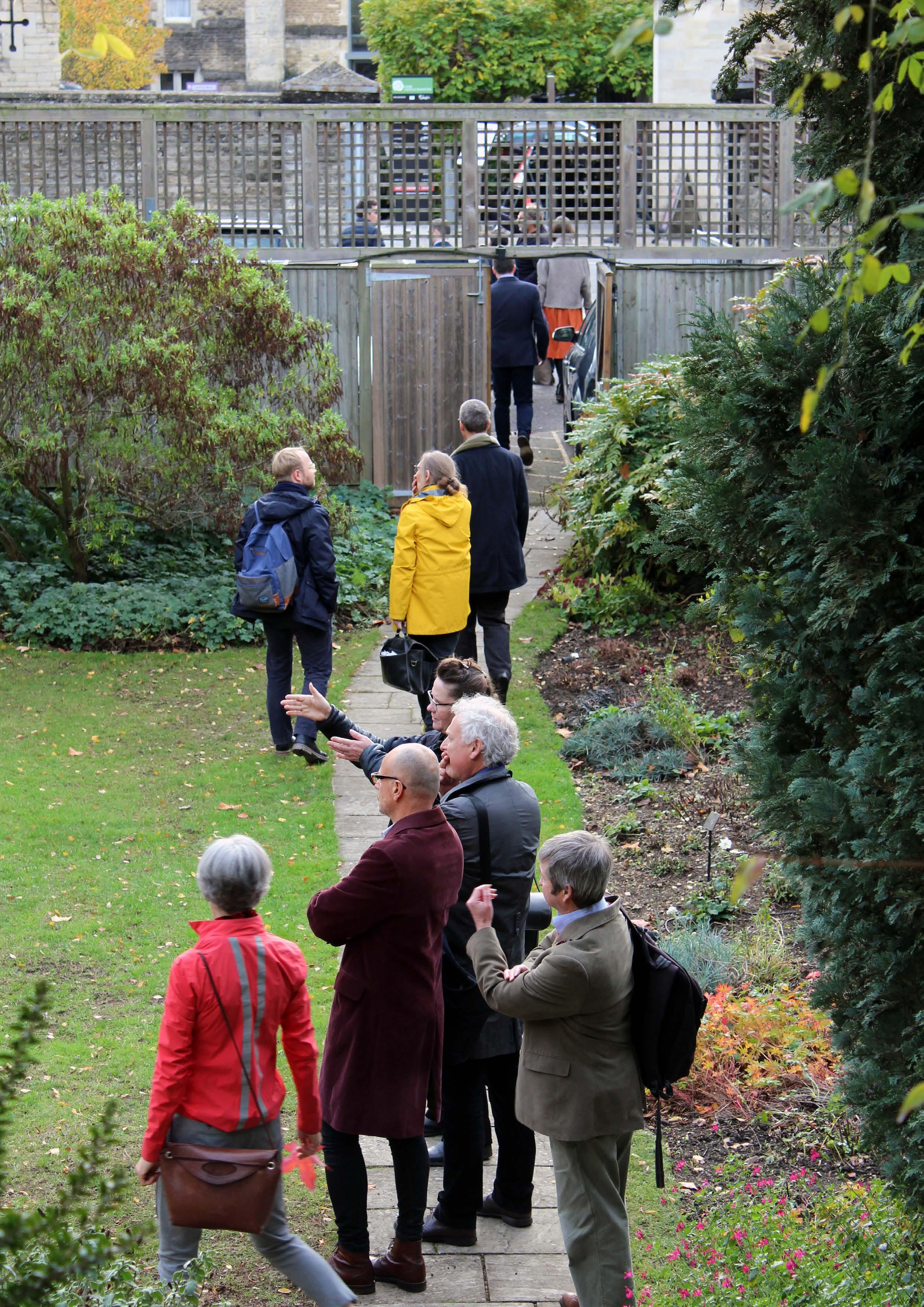
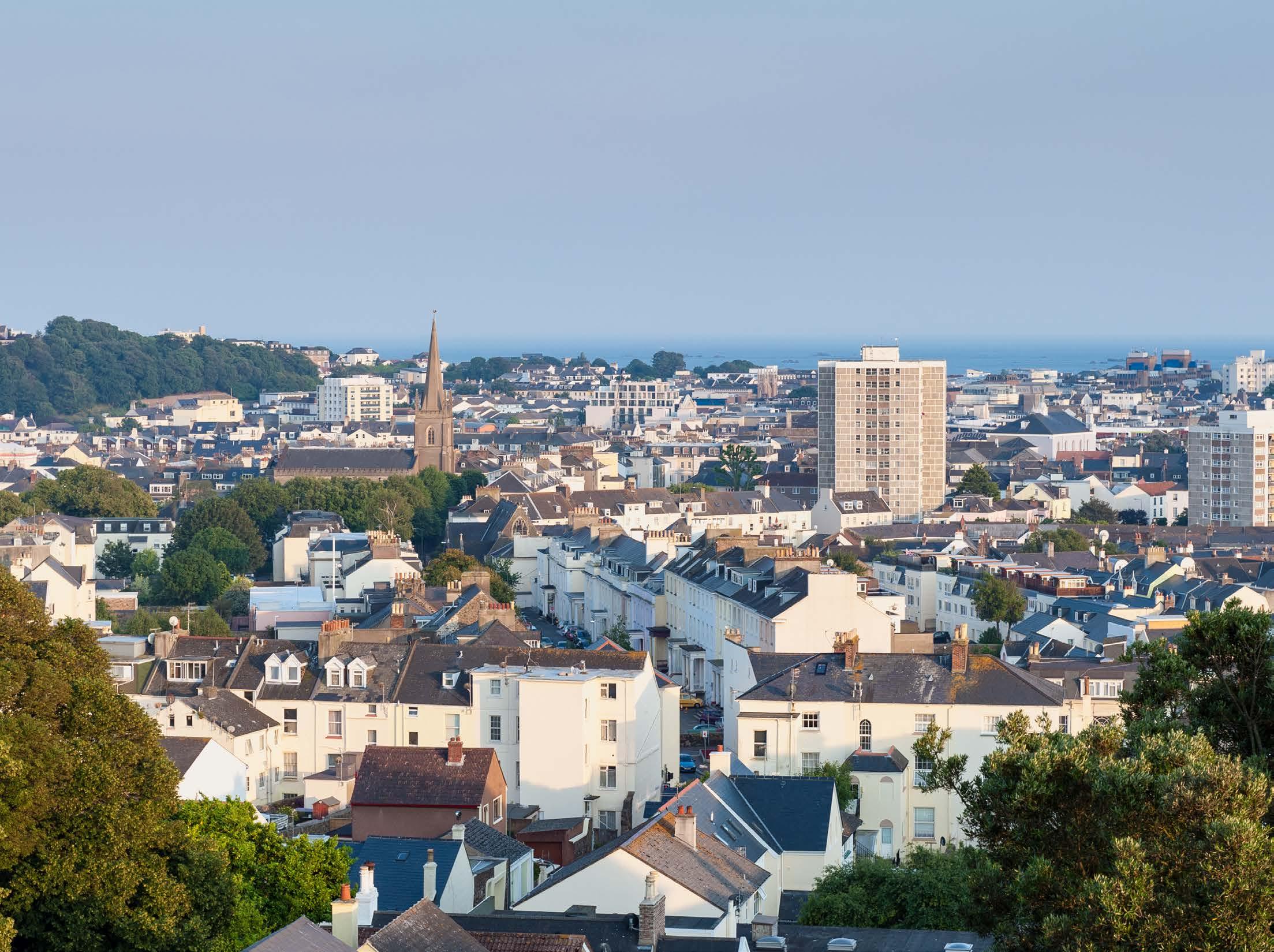
In Jersey, we hosted six collaborative co-design workshops on behalf of the States of Jersey and the Jersey Development Company. These focused on the redevelopment of South West St Helier including the future hospital site. This was to establish a shared vision with residents after Design Council advised that the development masterplan was both undeliverable and had engaged poorly with stakeholders.
Our expert advice led to the recommendation and delivery of community and stakeholder engagement works, which allowed a shared vision and set of priorities and for maintaining key views to the seafront and Elizabeth Castle, promoting a wider mix of uses that would create broader value for the community.

To improve the standard of our built environment, we need a stronger, more coherent and predictable planning system. A single body, or group of affiliate members, with a mandate to foster high-quality built design in Britain would lead to greater coordination and sense of shared strategic direction; both across sectors and at all levels of planning. We believe there is a need for a Design Quality Unit for England to drive up the quality of urban development. Delivering Urban Quality, Time to Get Serious - published by the Place Alliance on behalf of a consortium including Design Council - makes a clear case for a Design Quality Unit and sets out options for making this happen.
Through our work, we can see how using design mindsets and skills adds value. However, we have learned that when design is only considered in the later stages of the development of a building or place, there is often a missed opportunity where that development could have been delivered in a way that added greater value for the end user. This understanding has influenced our decision to work more in the first diamond, where we can help clients to reframe the problem they are trying to solve and put the people that are going to use that place or service at the heart of the decisions they make. We also increasingly work with major national infrastructure providers, as their decisions shape the way that millions of people live their lives.
We must not underestimate the importance of a shared vision of what we value – not just the bottom line, but how to take into account the social and environmental benefits of delivering a higher quality built environment. Having evidence of this wider value to make the case for prioritising design is key, as well as the lessons we learn from the homes, neighbourhoods and infrastructure we create. However, good evaluation isn’t always prioritised in the built environment and there aren’t always right tools: for example, our Healthy Placemaking research highlighted that practitioners didn’t always have the necessary tools to measure and explain impact. In the coming year, this is something we will be doing more to advocate for as part of our ongoing efforts to demonstrate the full value of design.

This report shows the power of design and the significant impact it has on three key areas of the economy – business innovation, places and public services.

We will continue to build on our successes. As laid out in our Strategy 2020-24, we will focus our efforts on three key priority areas: to improve the nation’s health and wellbeing, and reduce health inequalities, to enable sustainable living and help the UK reach its stated net zero targets, and to intensify our market-making work for design, helping people access, understand and learn essential design skills to respond to these and other major challenges.
We are choosing to act in these areas because we are uniquely placed to do so. The issues we are focusing on are complex; they require more than one answer from people across a broad range of disciplines and sectors, from grassroots to government.
We will seek to demonstrate the deeper impact that design can have and will continue to tell compelling stories of how design makes a difference and can be a force for change. However hard, we will seek to evidence a more comprehensive story on the value of design. As well as looking at economics, we will also examine the social and environmental impact of design.
This report tells an overwhelmingly positive story, referencing how the design sector has flourished over recent years. But we publish it at a challenging time – amid the coronavirus pandemic and on the brink of an economic downturn. The sector is now under unparalleled pressure, as shown by our recent research with the Creative Industries Federation.
Right now, we must remain mindful of the power of design to confront the biggest challenges, and ensure it plays a central role in the coronavirus recovery. The findings in this report provide valuable insight into, and inspiration around, the role of design in rebuilding our economy, strengthening society and nurturing our environment both now and over the years ahead.
This framework aims to help designers and non-designers across the globe address some of the most complex social, economic and environmental problems. The framework helps Design Council to support the public, private and third sector organisations they work with to transform the way they develop and deliver their services.
At the heart of the framework for innovation is Design Council’s design methodology, the Double Diamond – a clear, comprehensive and visual description of the design process.
As well as highlighting the design process, Design Council’s framework for innovation also includes the key principles and design methods that designers and non-designers need to take, and the ideal working culture needed, to achieve significant and long-lasting positive change.
Design Council’s Double Diamond clearly conveys a design process to designers and non-designers alike. The two diamonds represent a process of exploring an issue more widely or deeply (divergent thinking) and then taking focused action (convergent thinking).
The framework for innovation outlines four core principles for problem-solvers to adopt so that they can work as effectively as possible.
- Put people first. Start with an understanding of the people using a service, their needs, strengths and aspirations.
- Communicate visually and inclusively. Help people gain a shared understanding of the problem and ideas.
- Collaborate and co-create. Work together and get inspired by what others are doing.
- Iterate, iterate, iterate. Do this to spot errors early, avoid risk and build confidence in your ideas.
In 2020 we developed a new set of design principles, building on the Framework for Innovation.
Design deeply.
We understand the root of the problem and its wider context so together we tackle the cause, not the symptom.
Design disruptively.
We are bold, provocative and reimagine the status quo, rather than just making a better version of what already exists.
Design collaboratively.
We recognise that one solution is not going to fix a problem, so we team up with others who are also working on the same goals.
Design democratically.
We shift power to communities by helping them to develop their own design skills to bring about positive change in their lives.
CHALLENGE
Connecting the dots and building relationships between different citizens, stakeholders and partners.
1. Be People Centred
2. Communicate (Visually & Inclusively)
3. Collaborate & Co-Create
4. Iterate, Iterate, Iterate
Explore, Shape, Build
Creating
Design Council
Eagle House
167 City Road
London EC1V 1AW
info@designcouncil.org.uk
020 7420 5200
designcouncil.org.uk